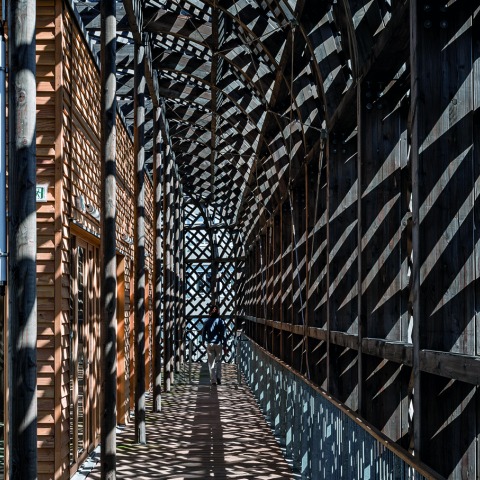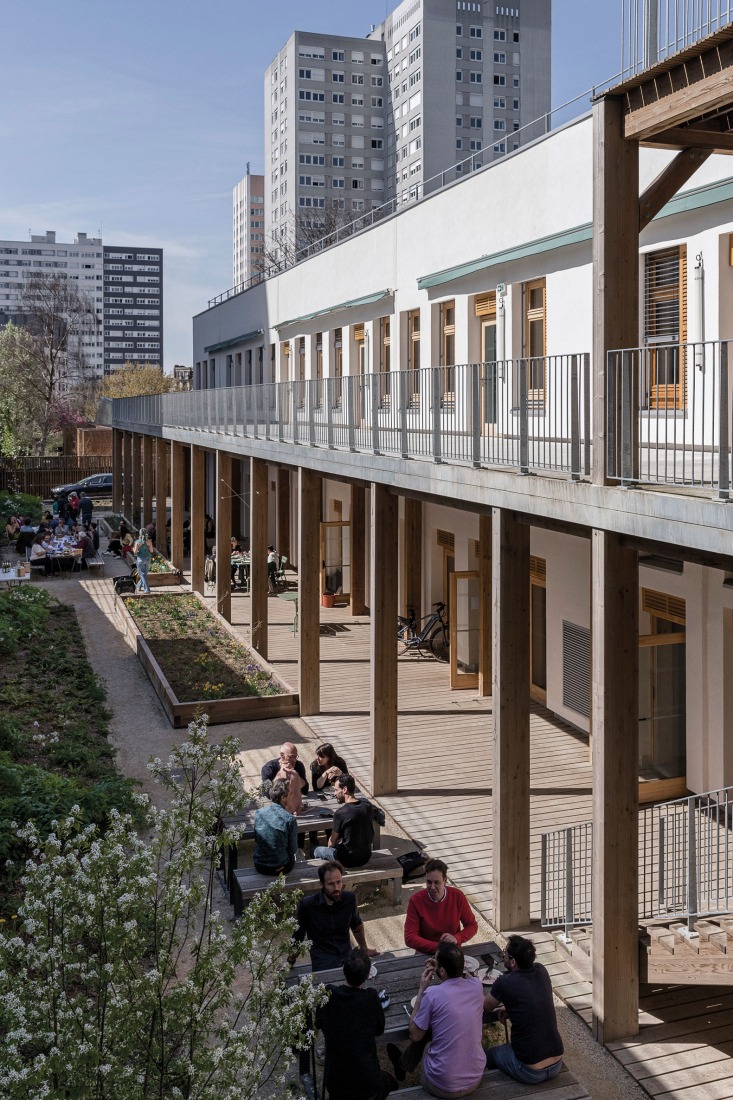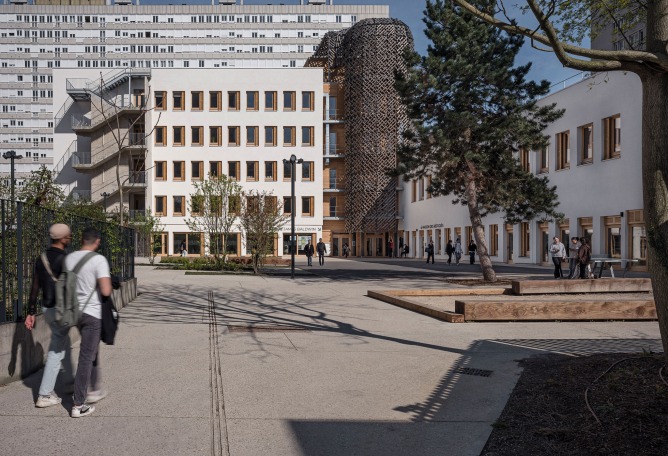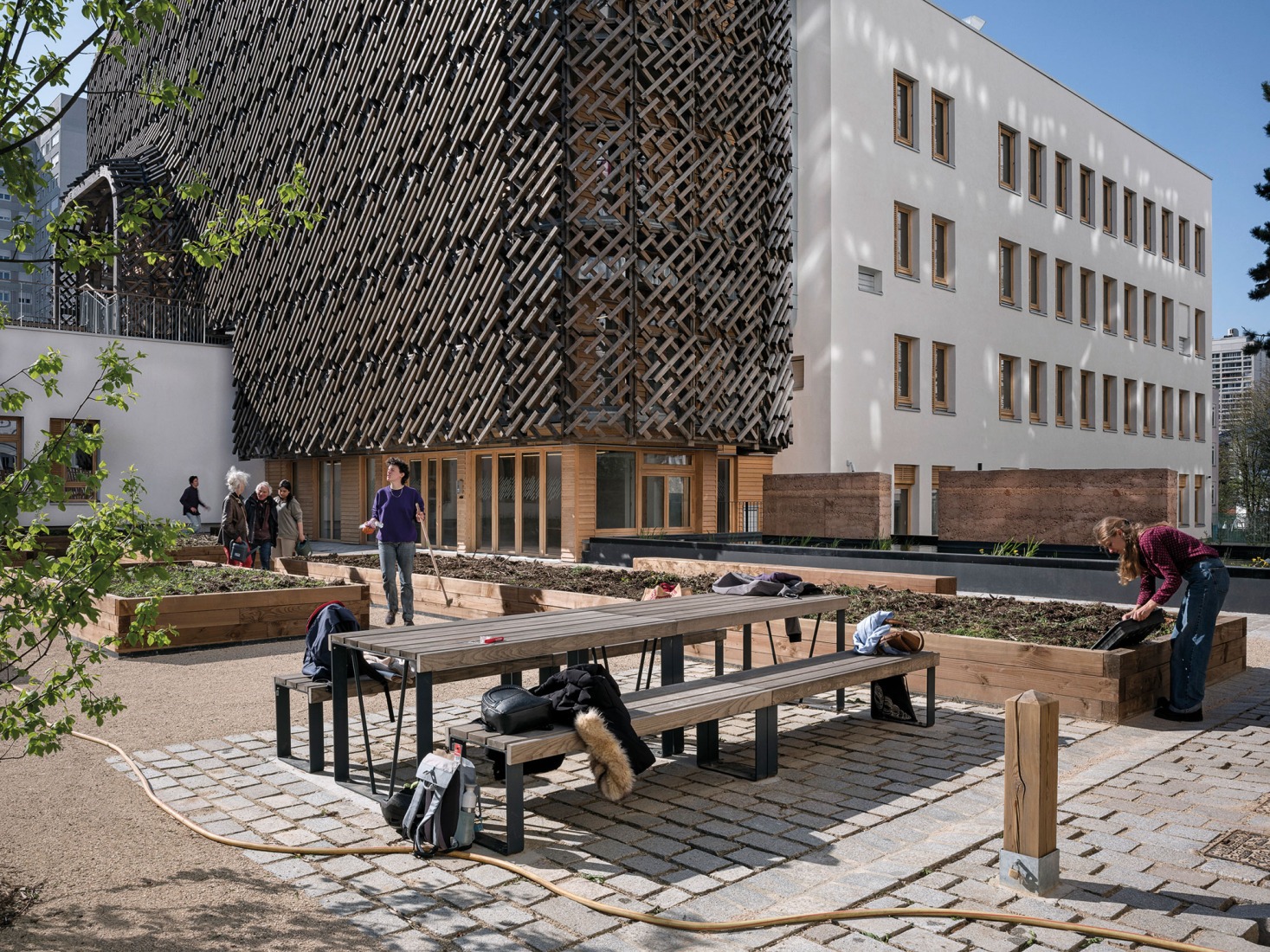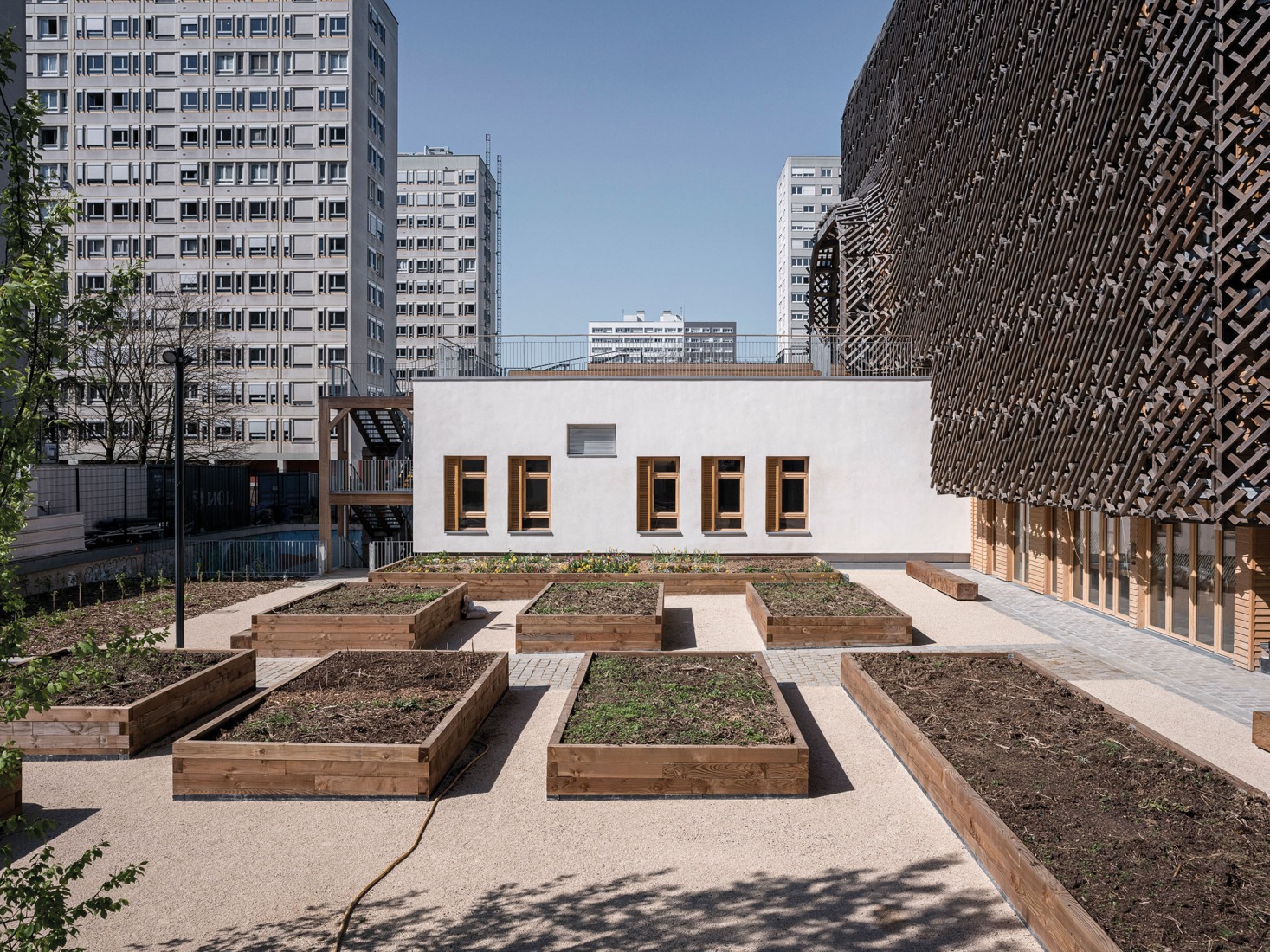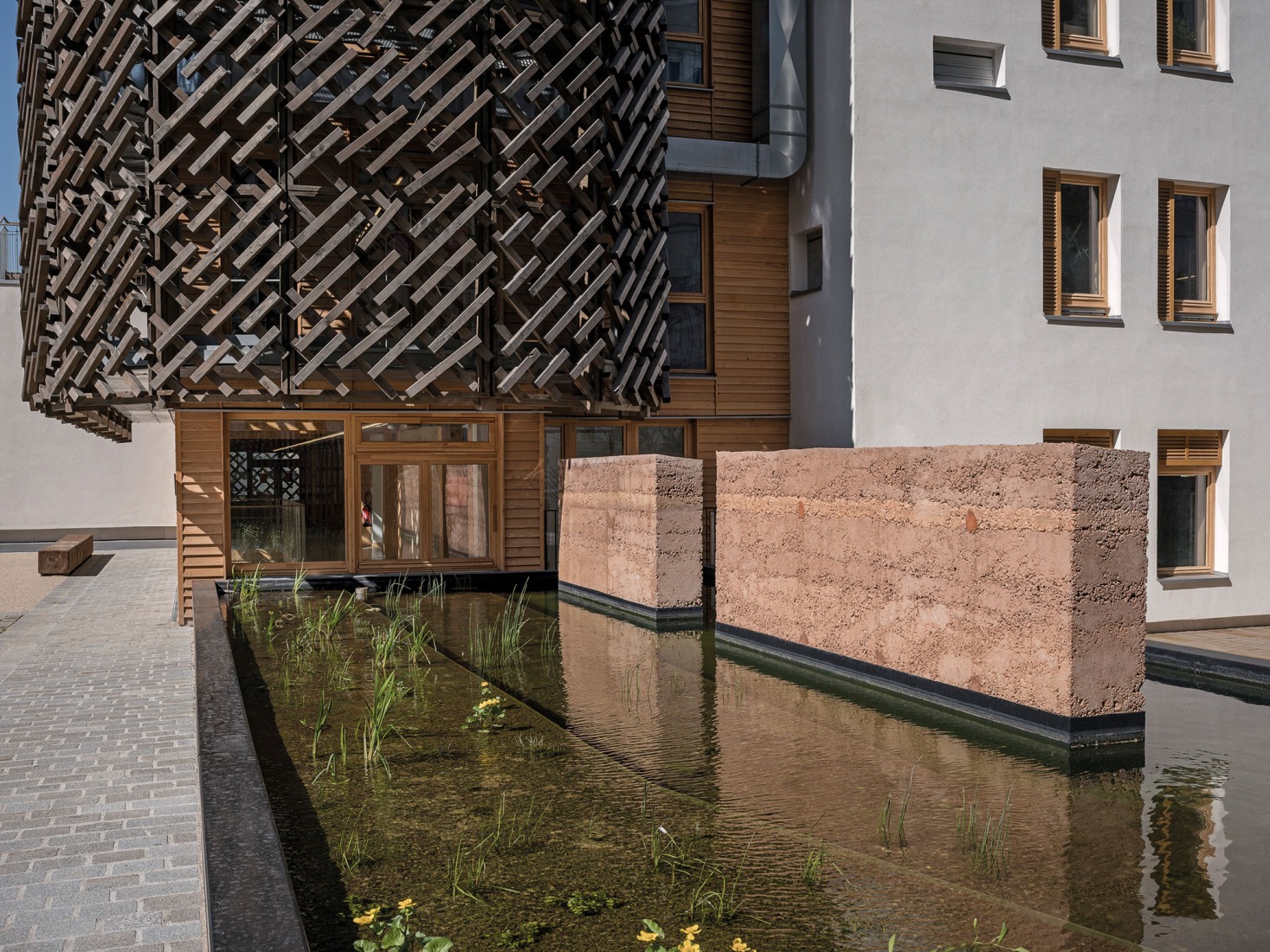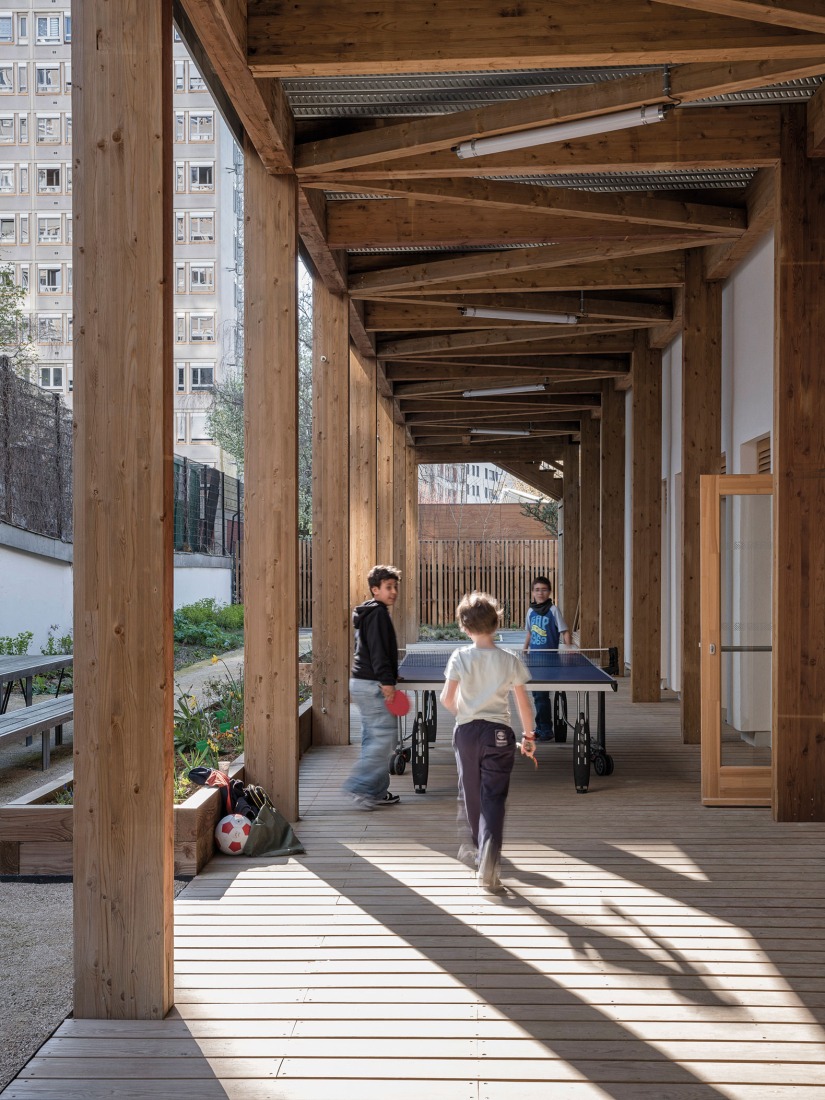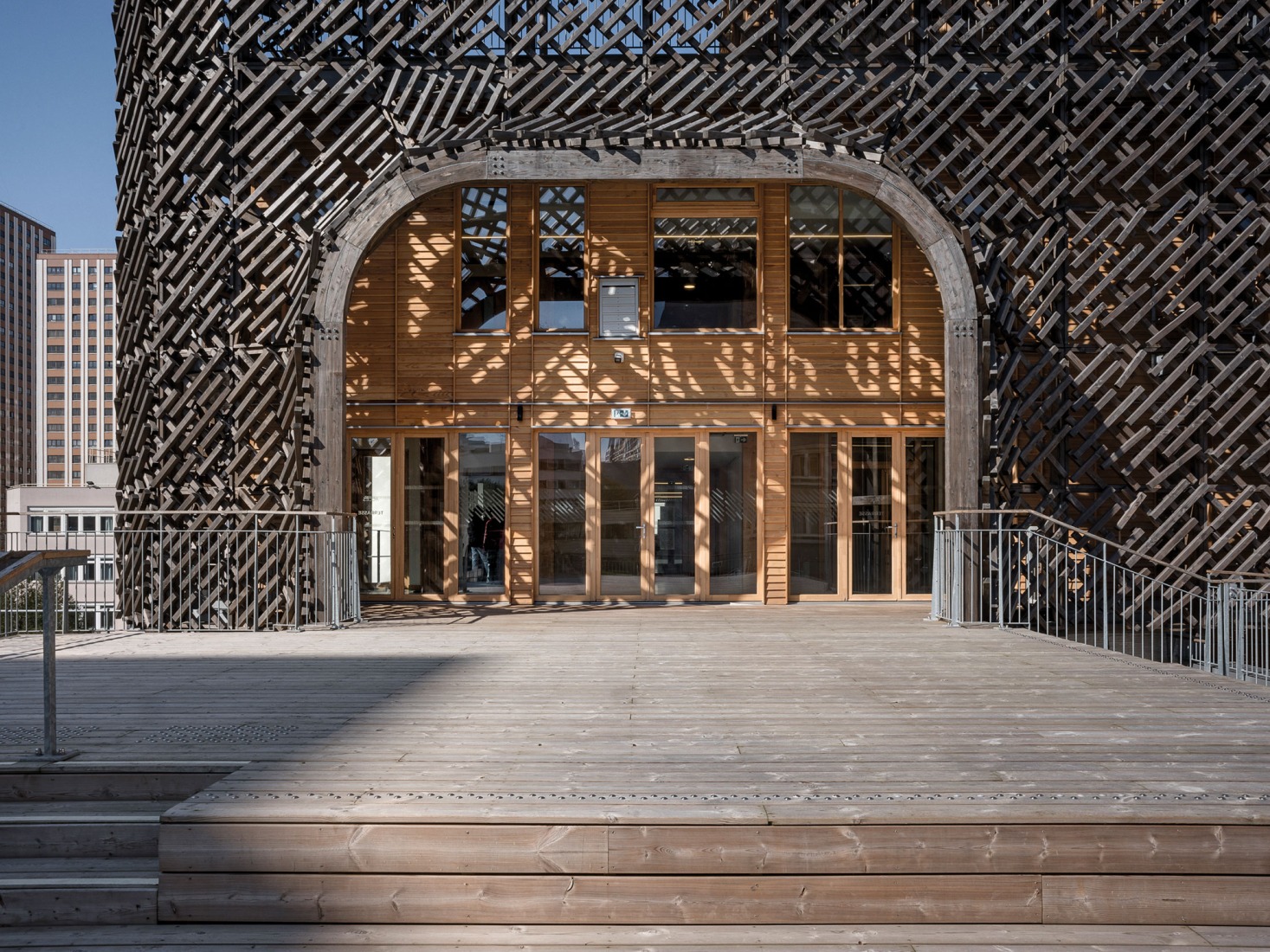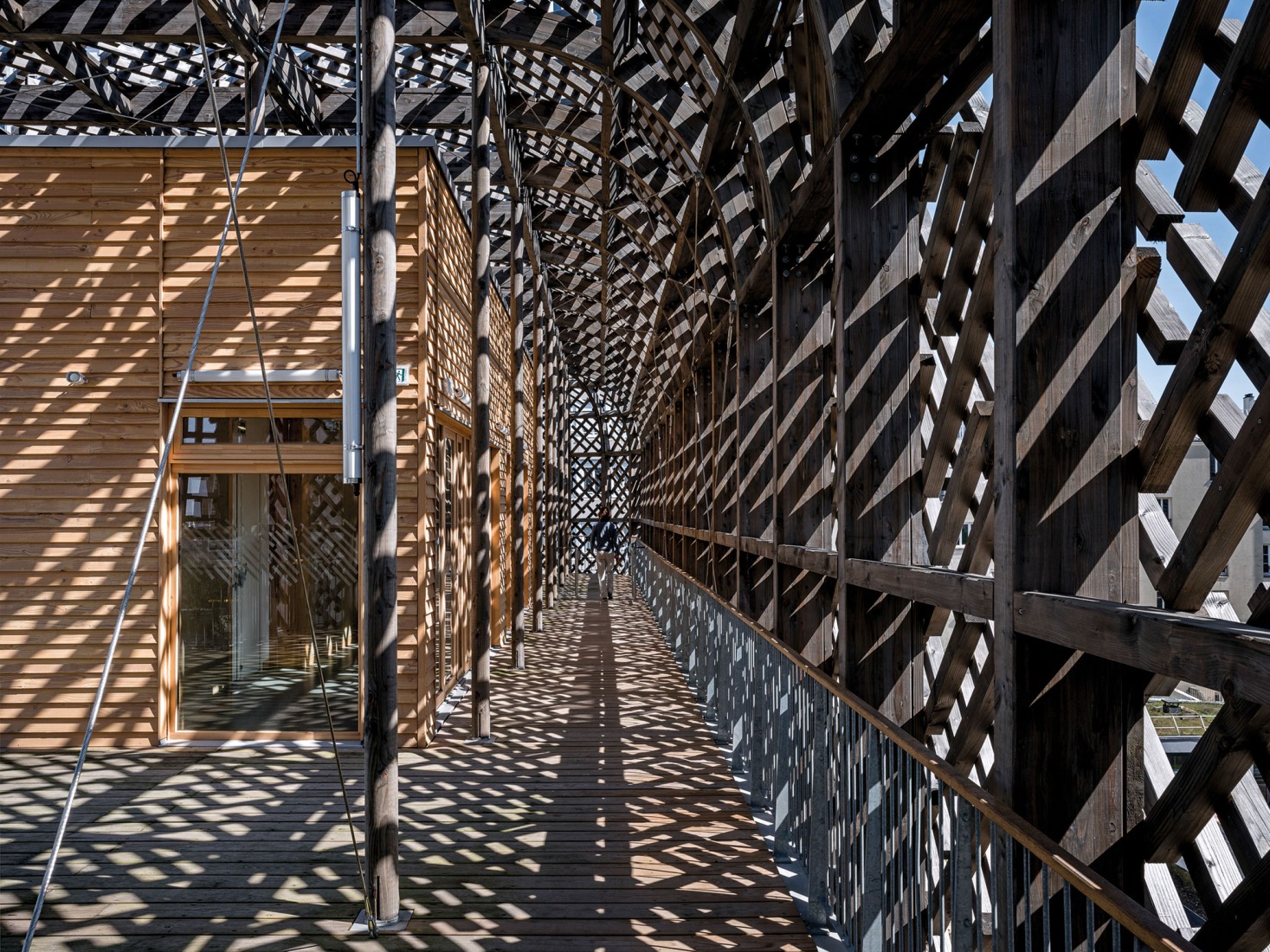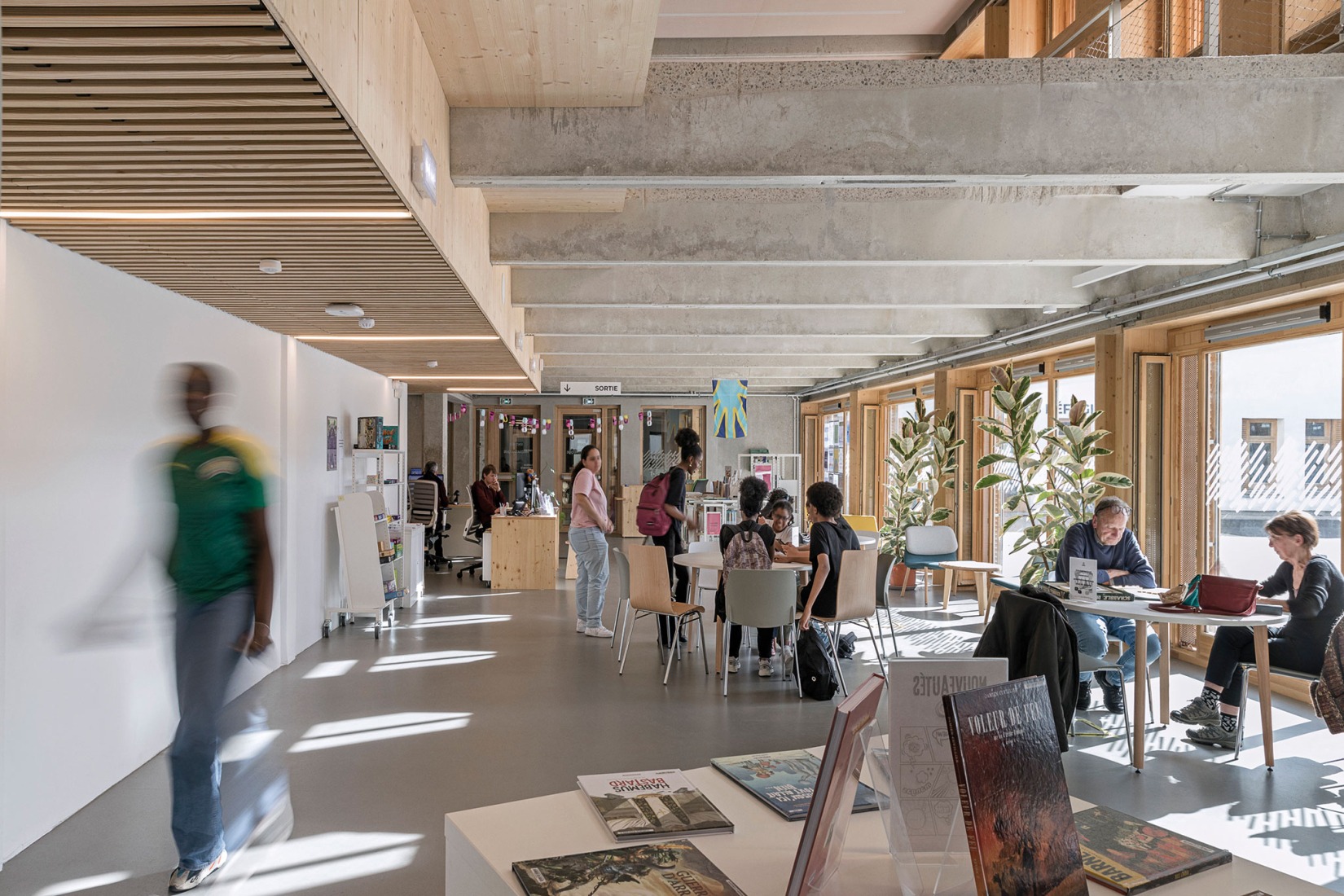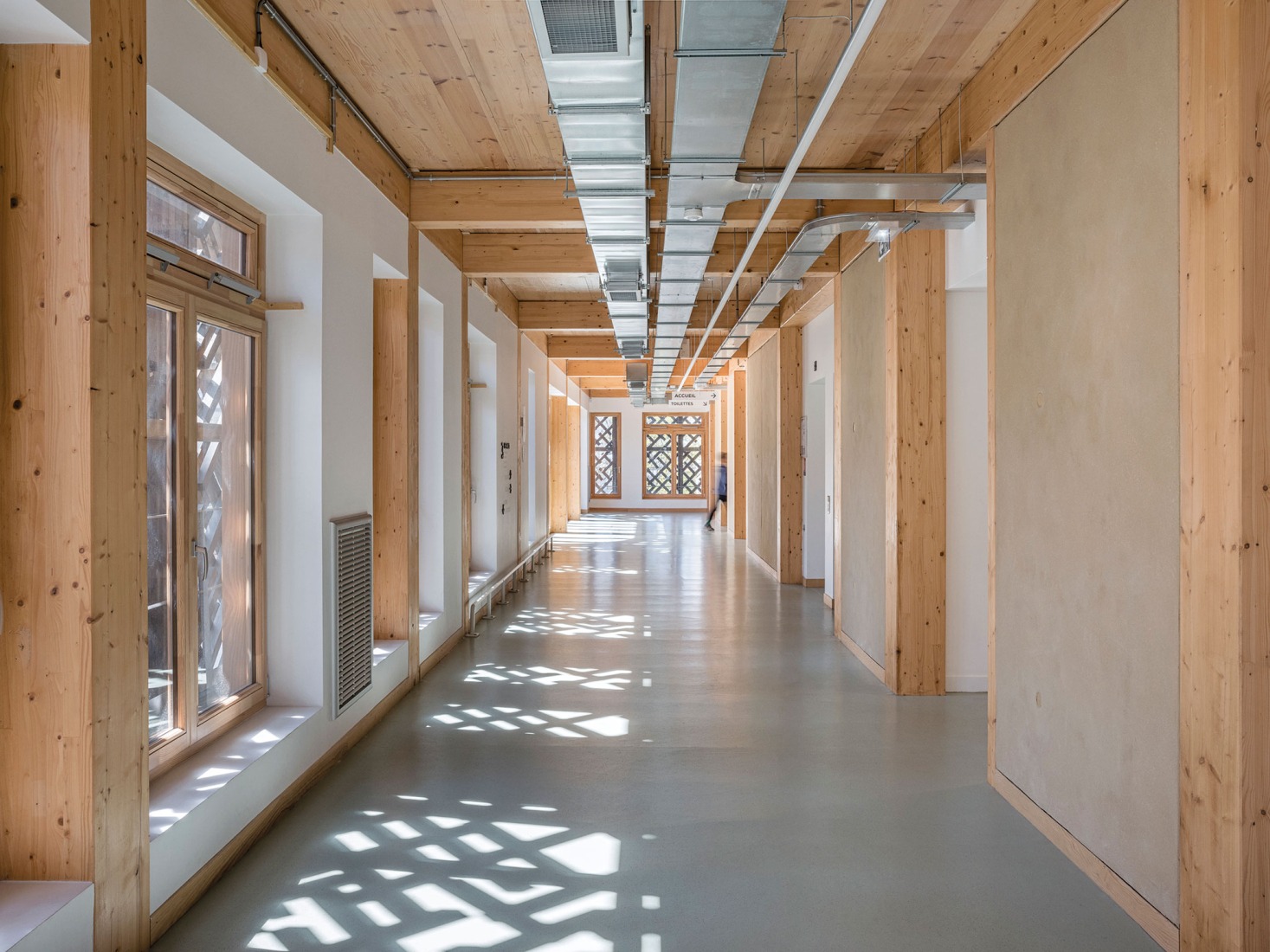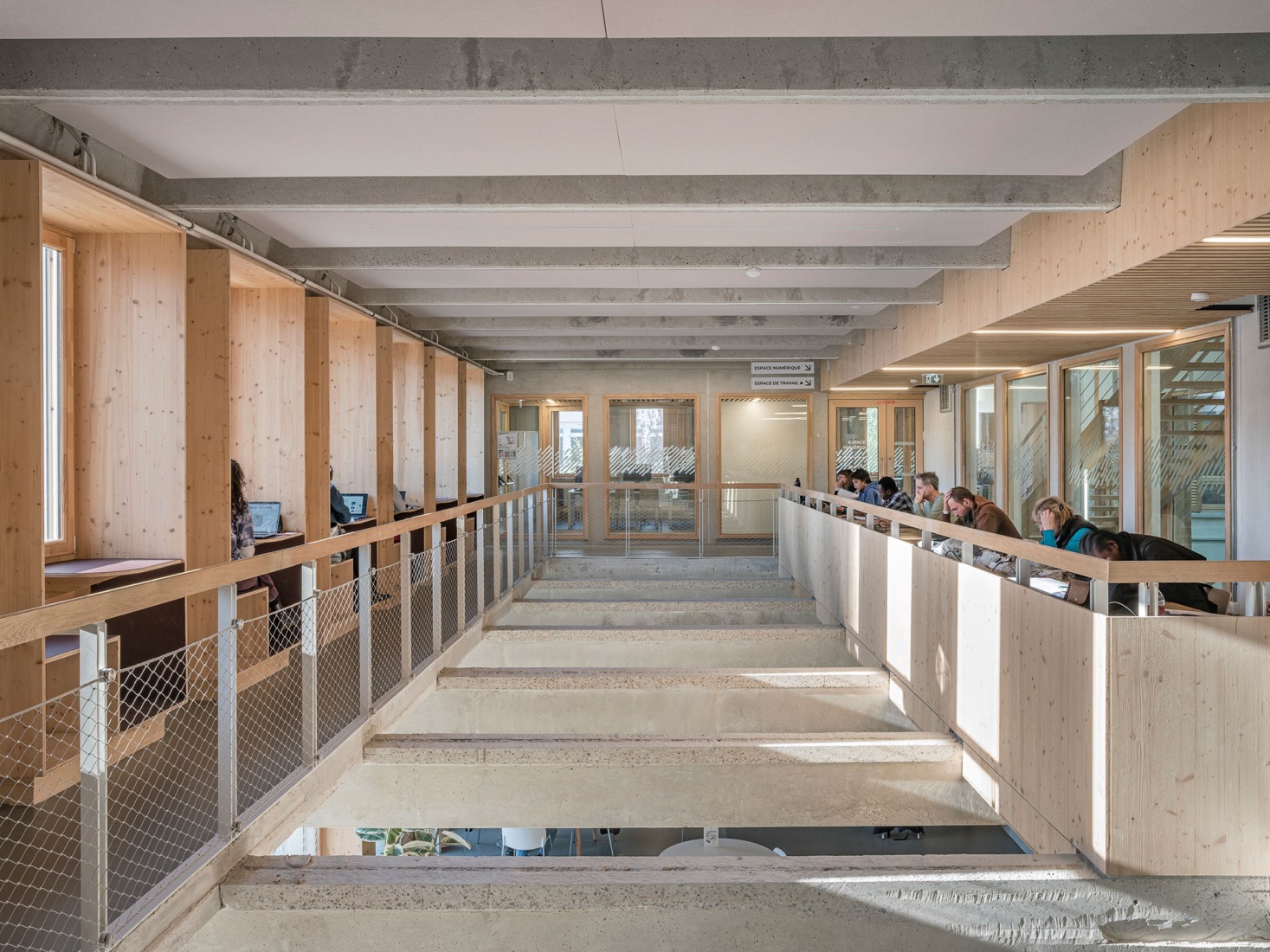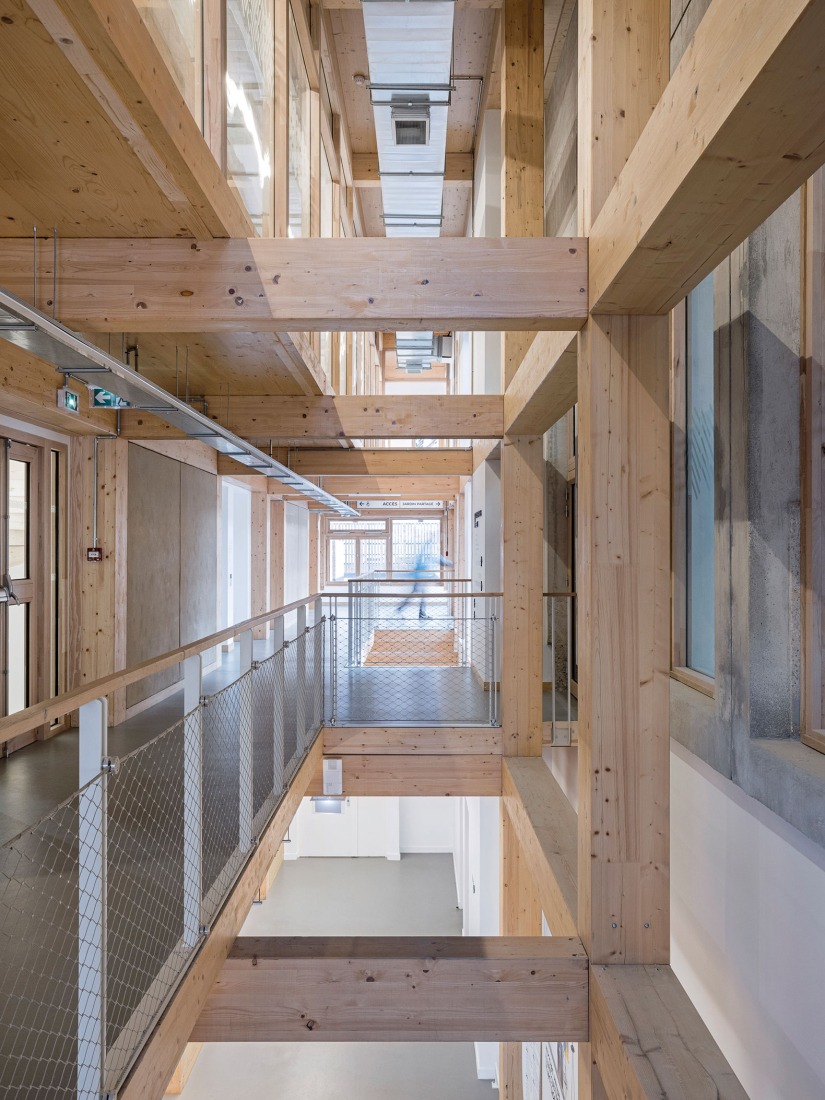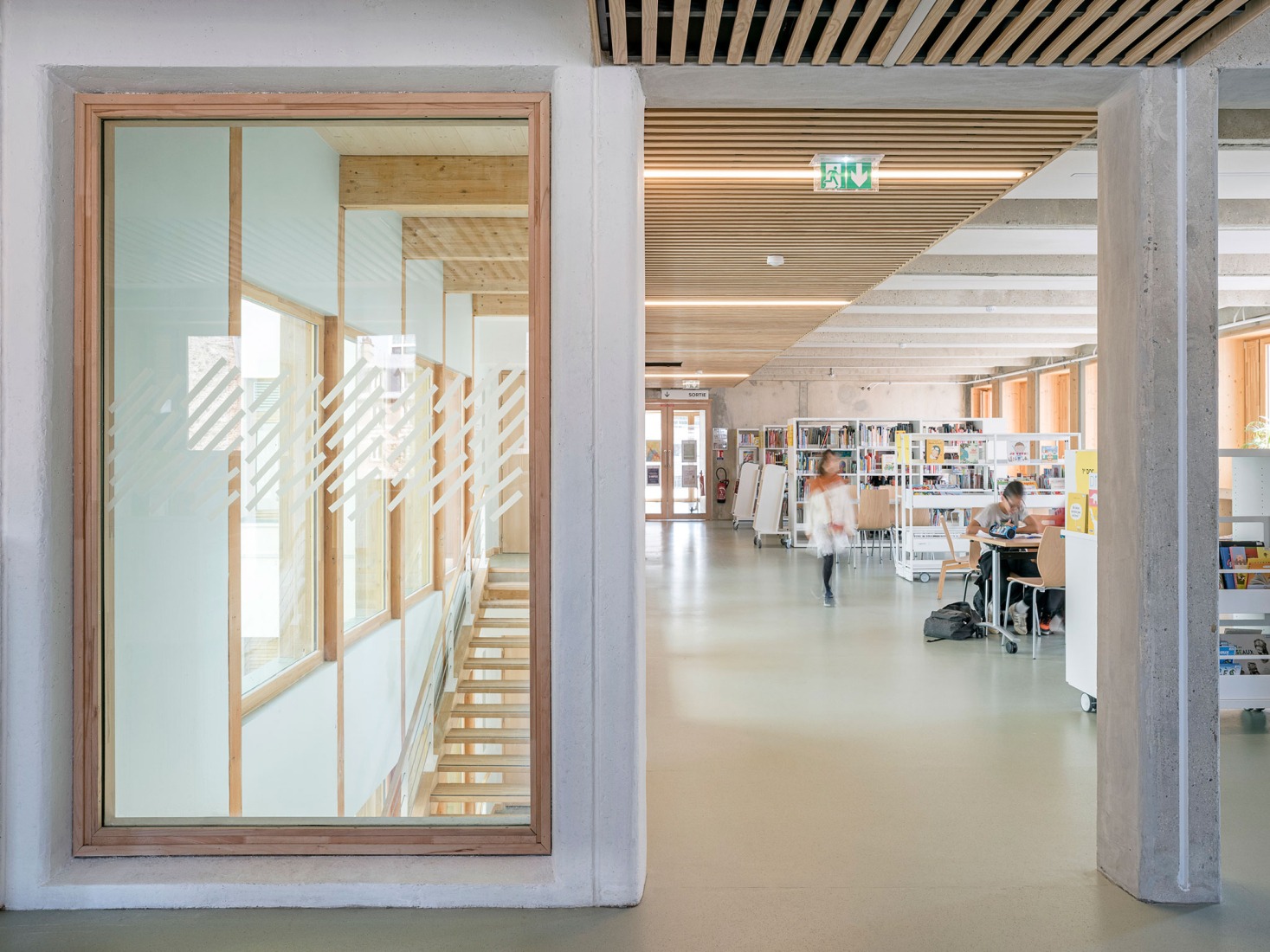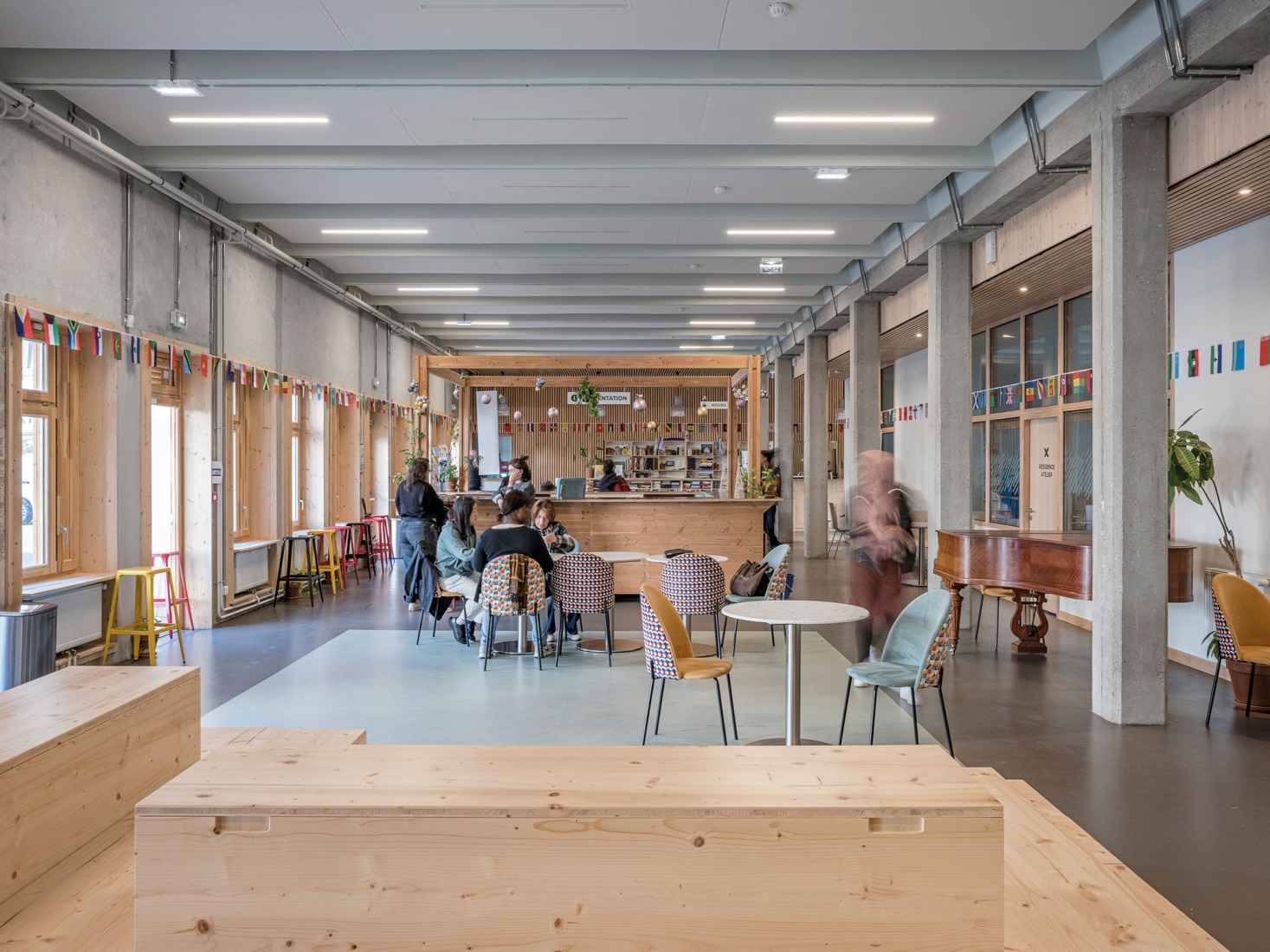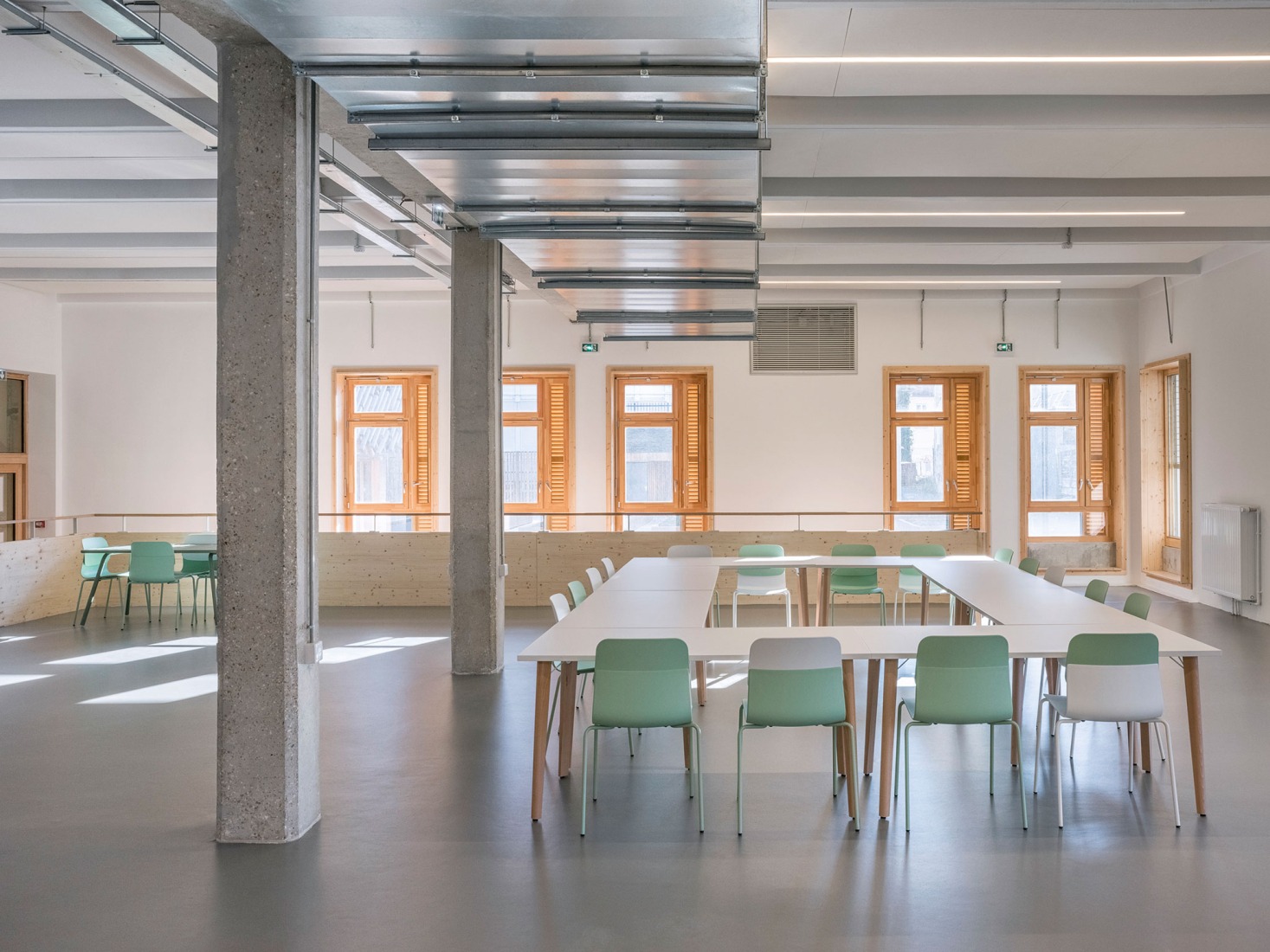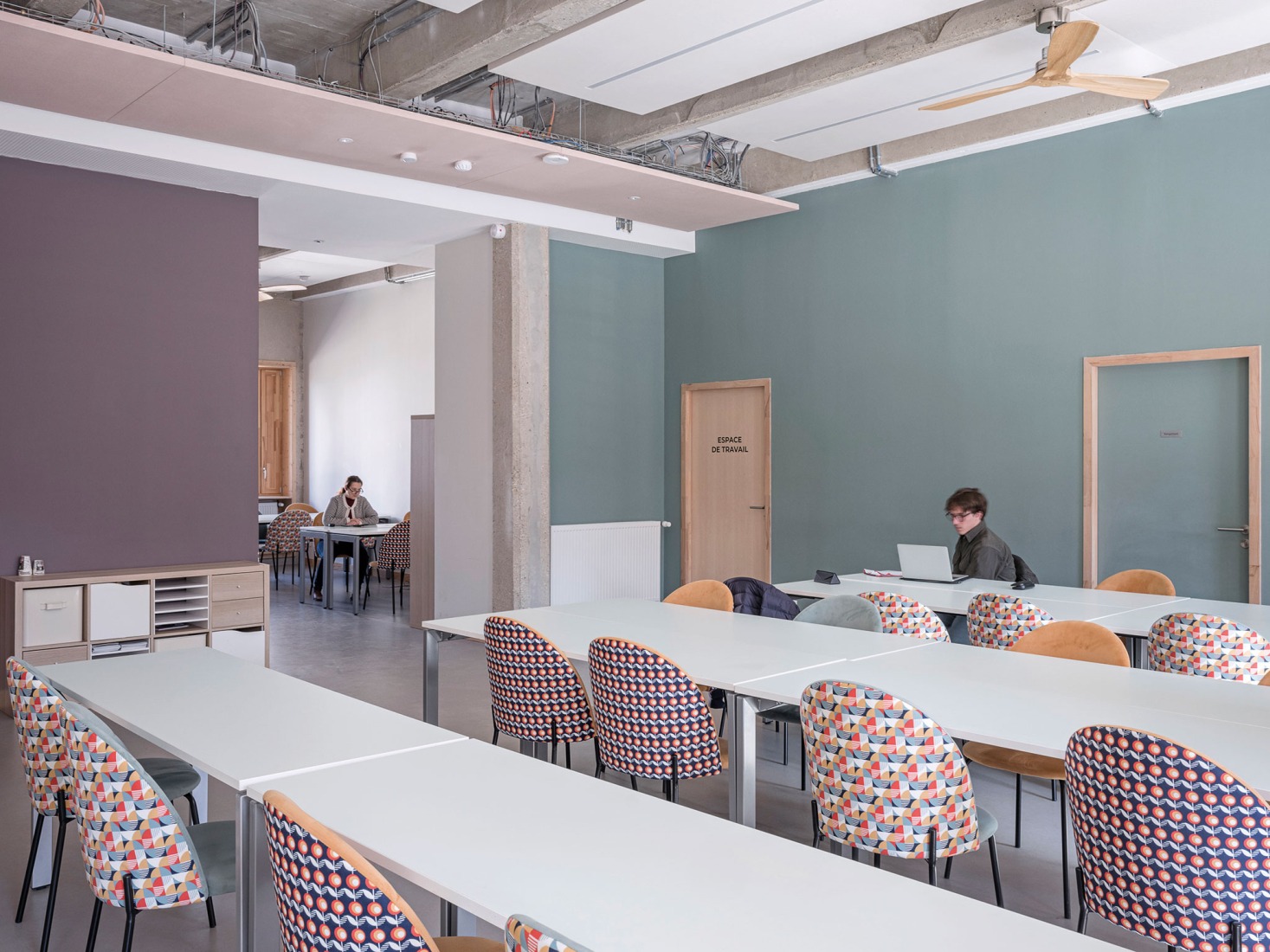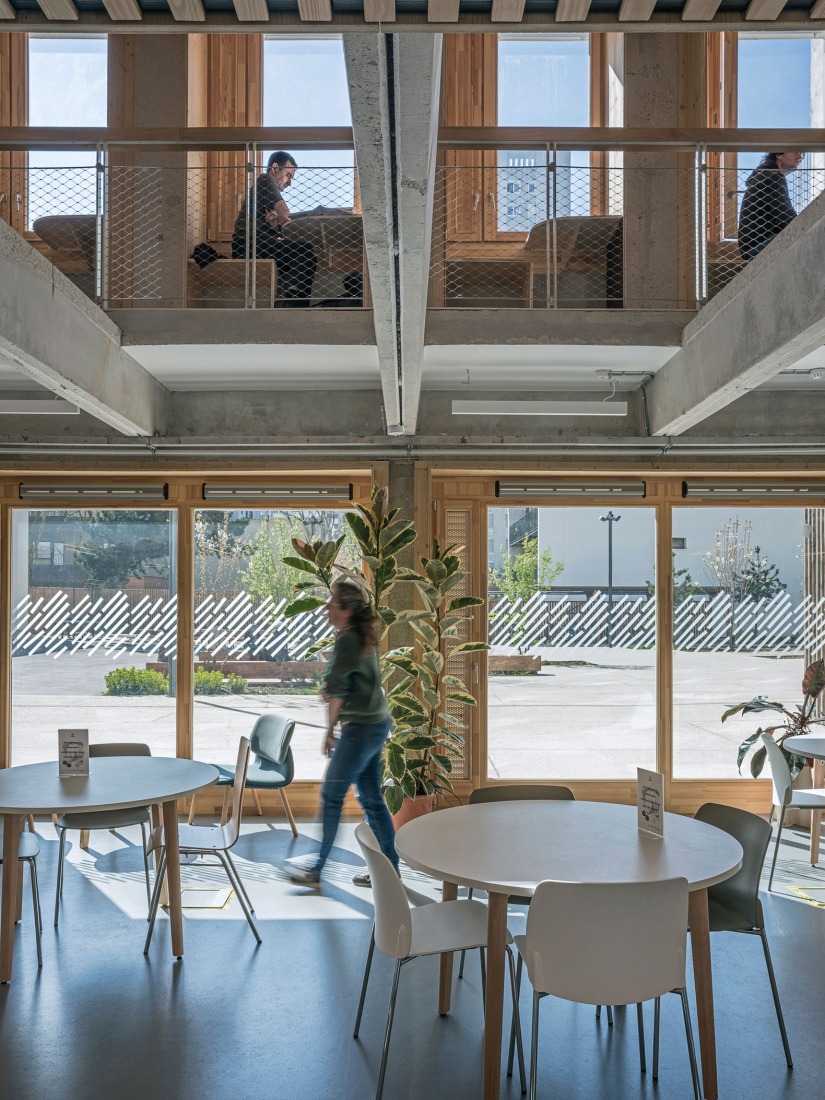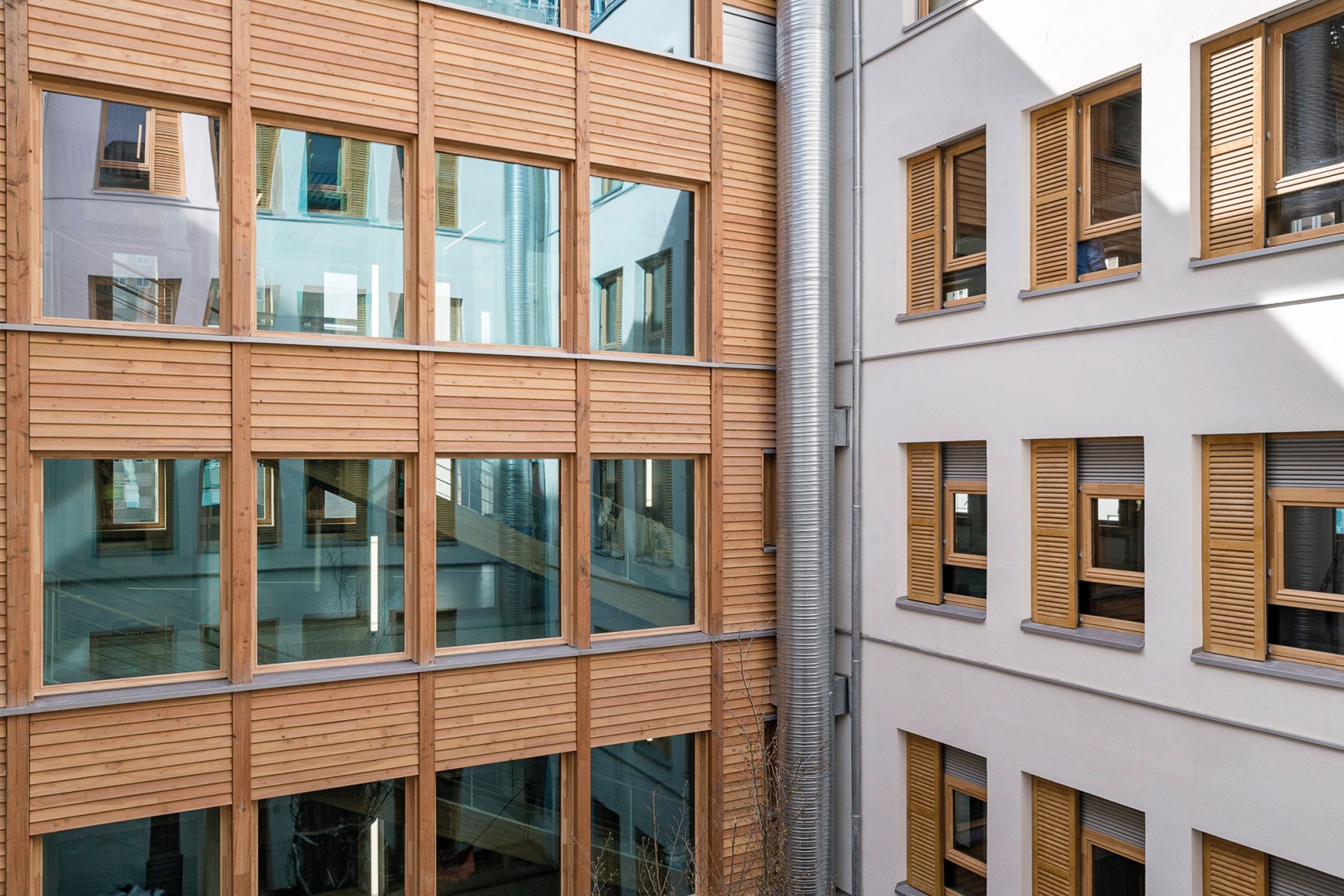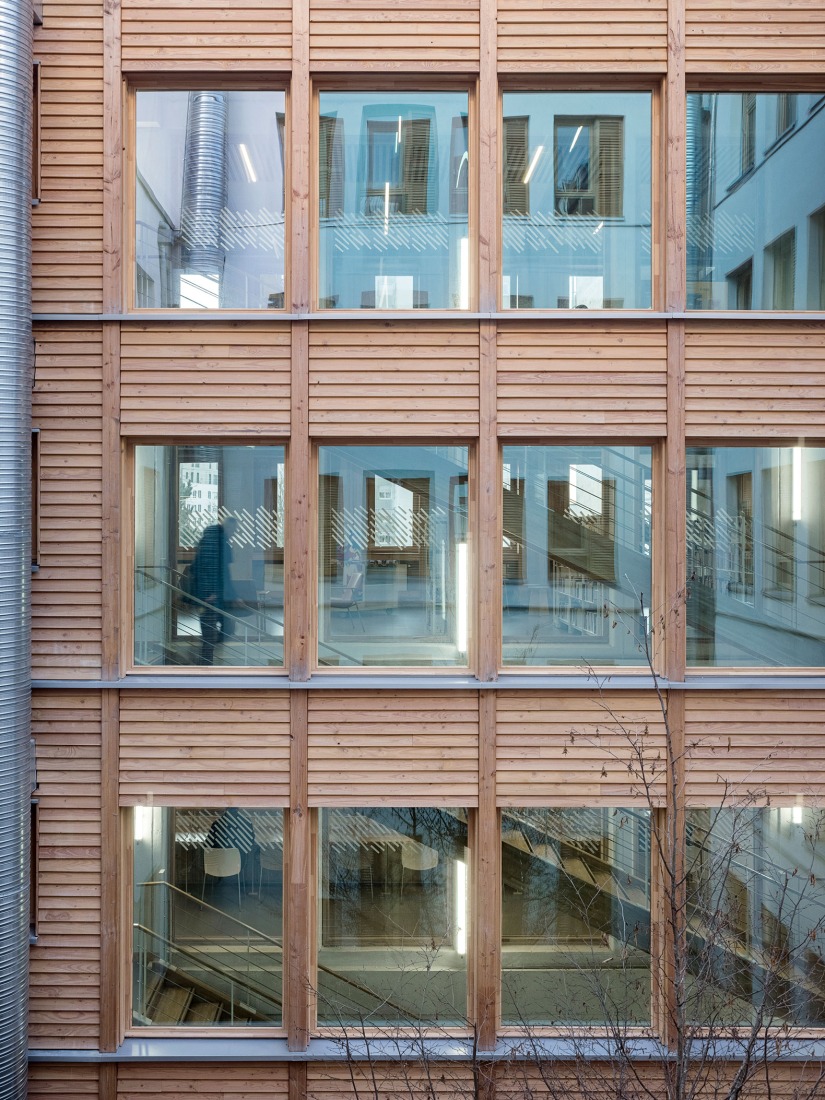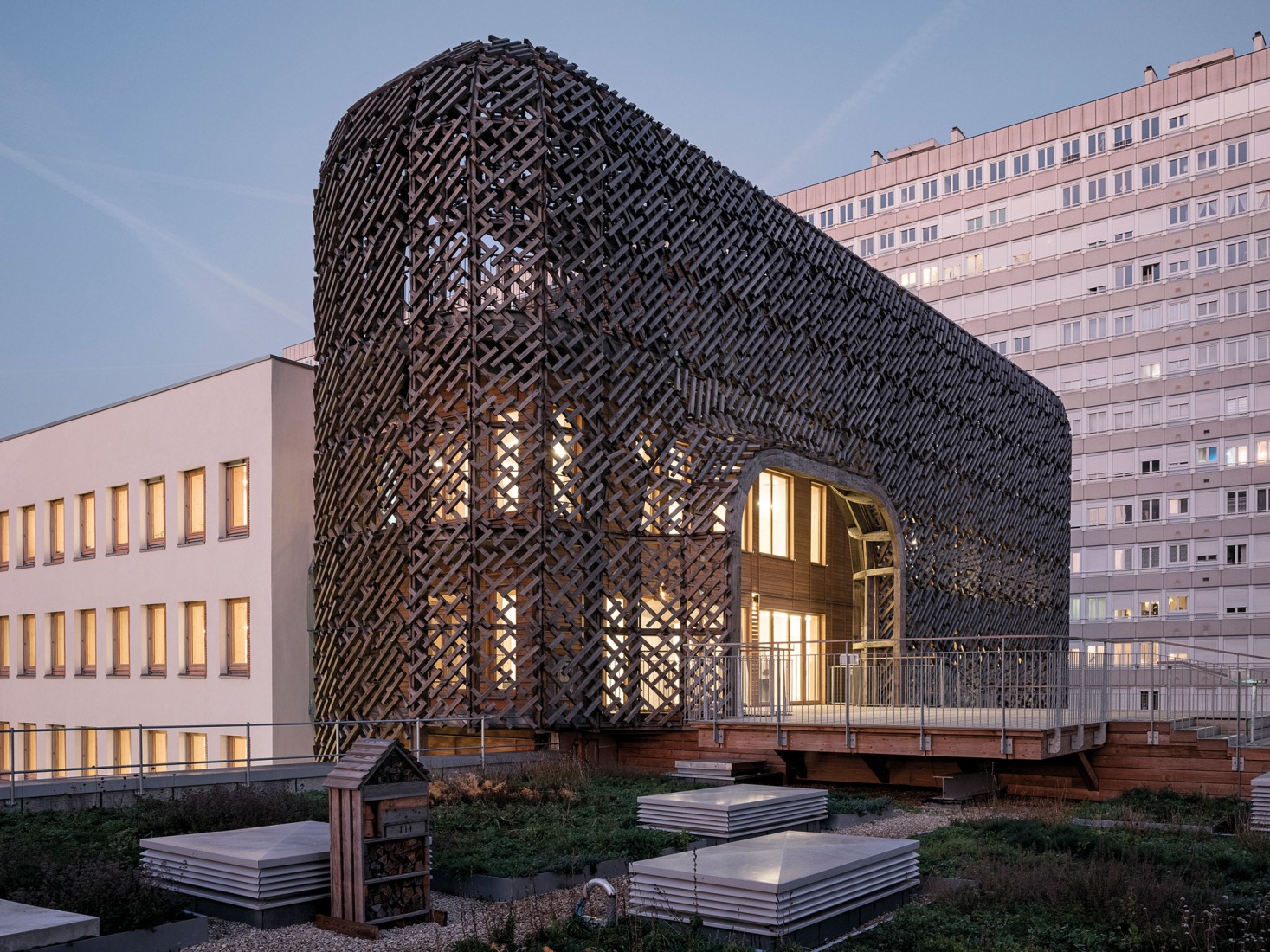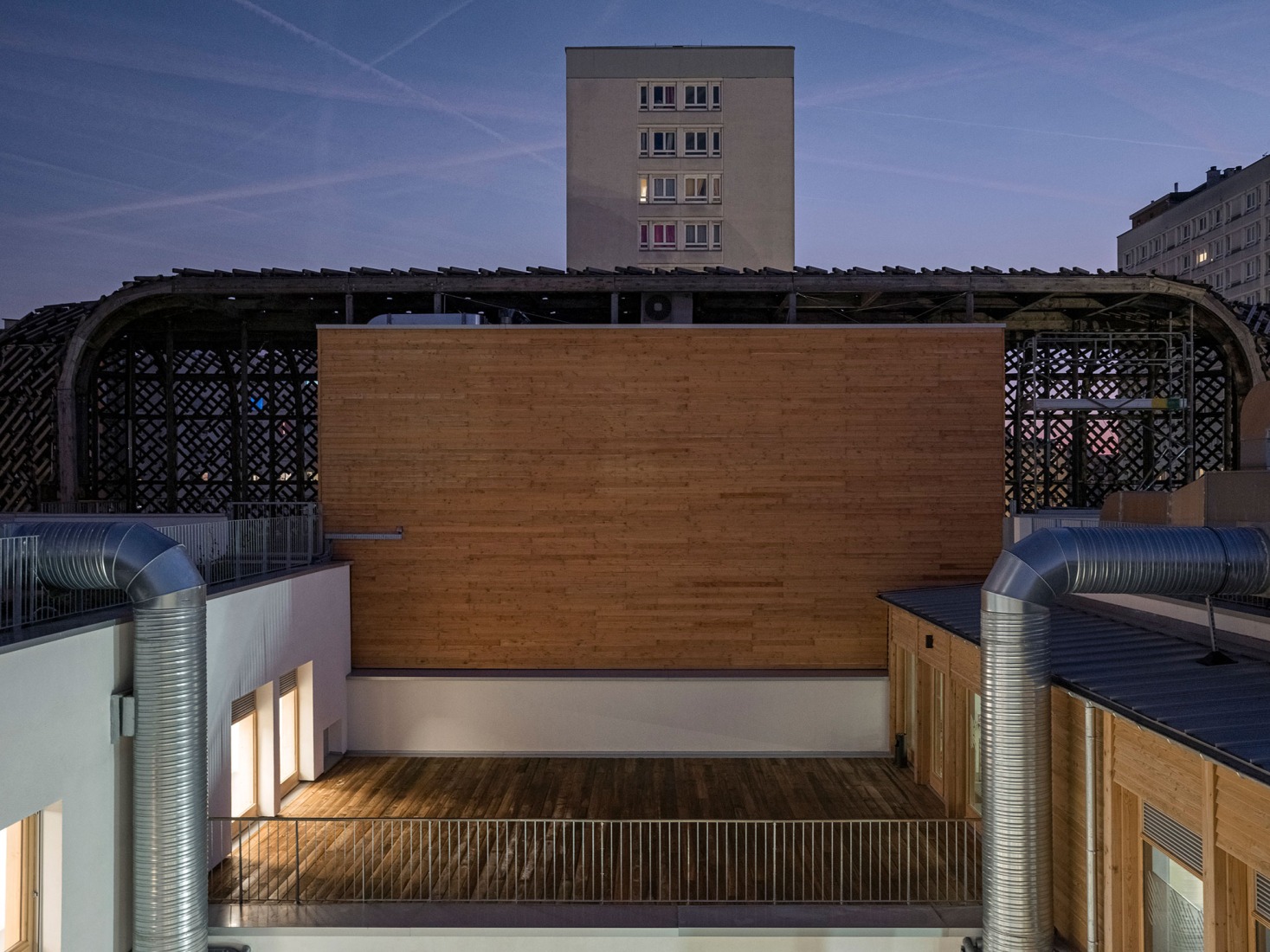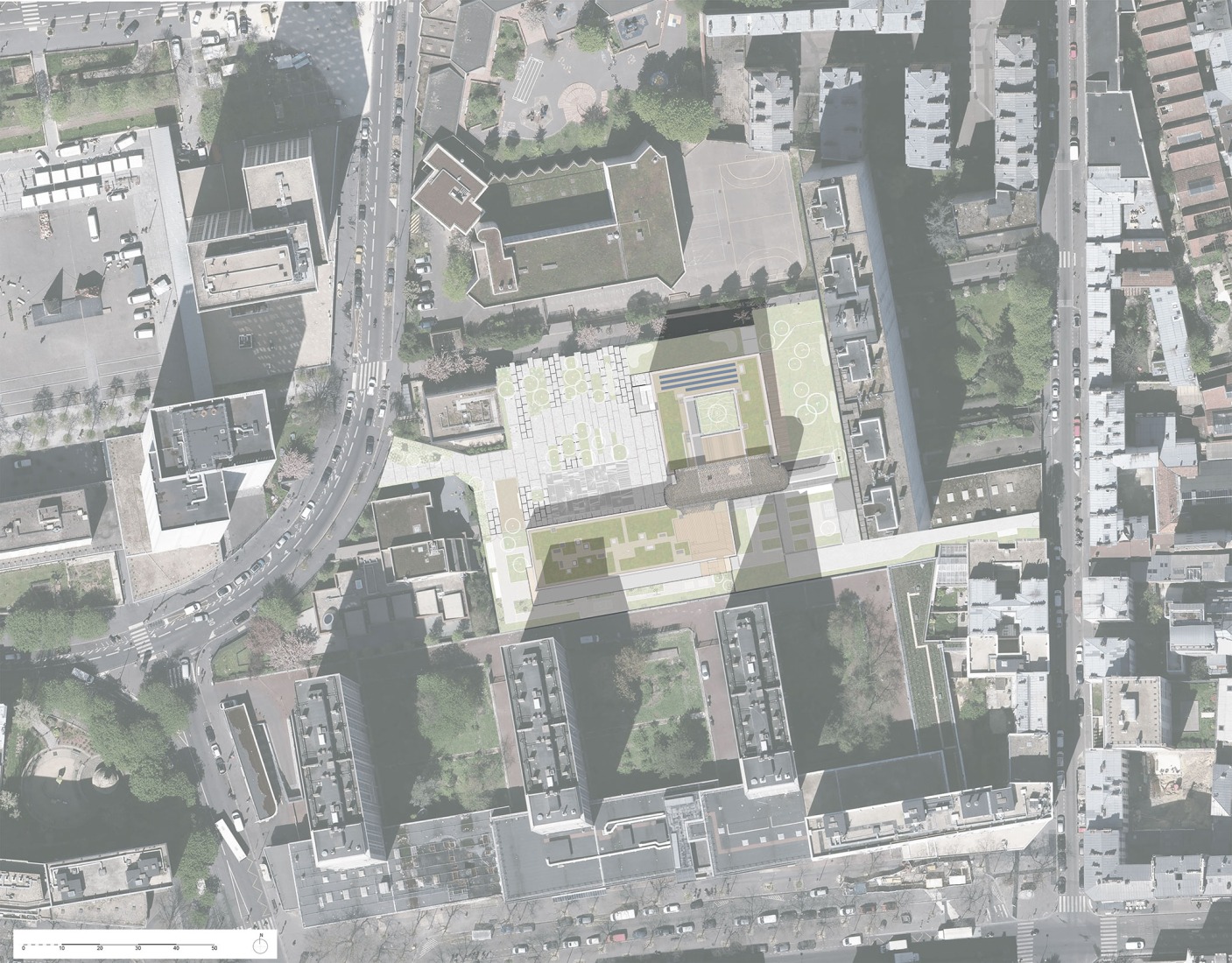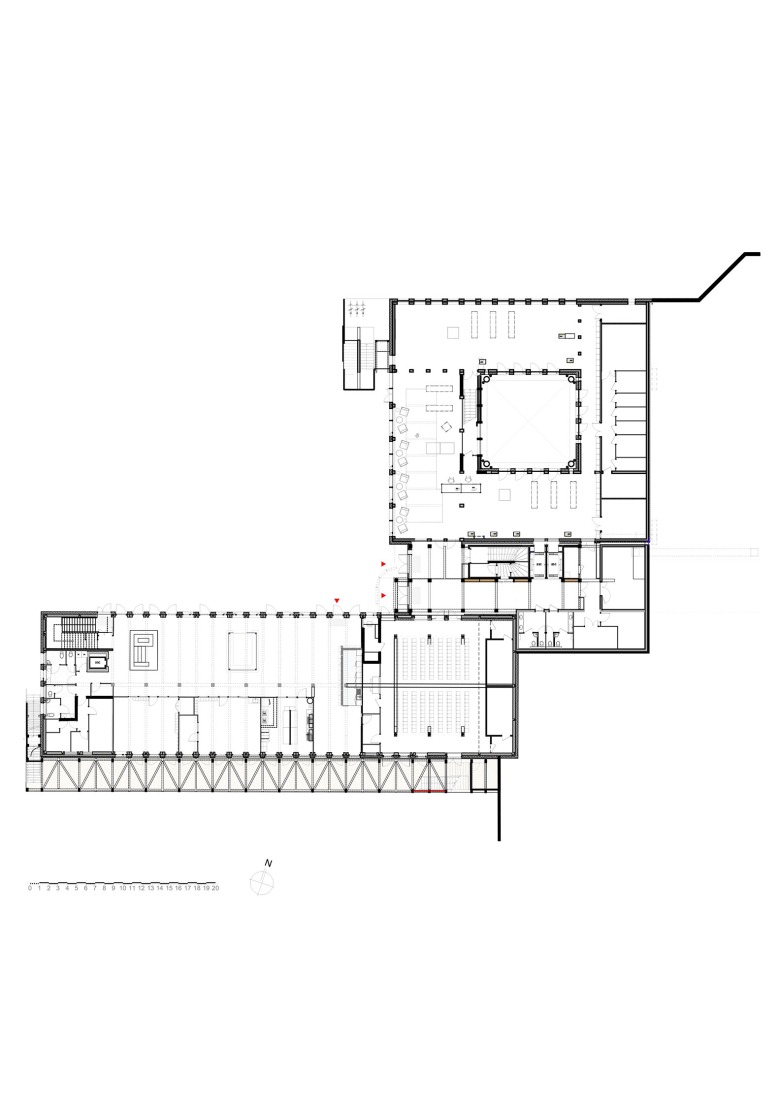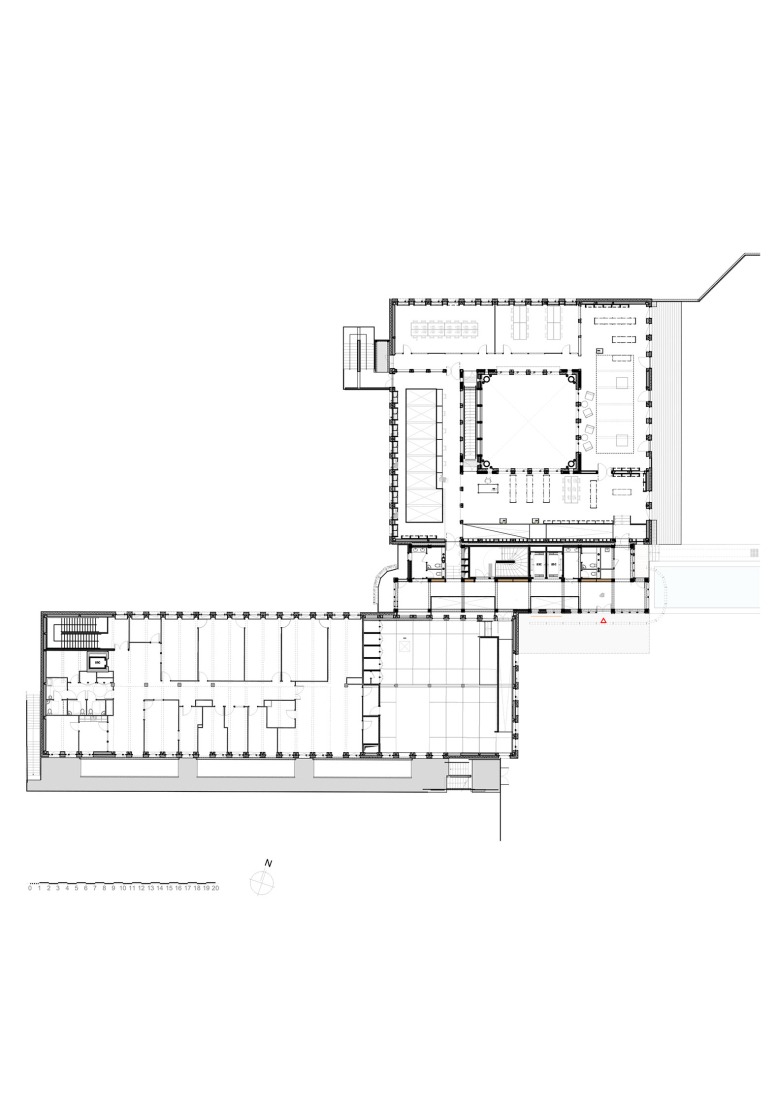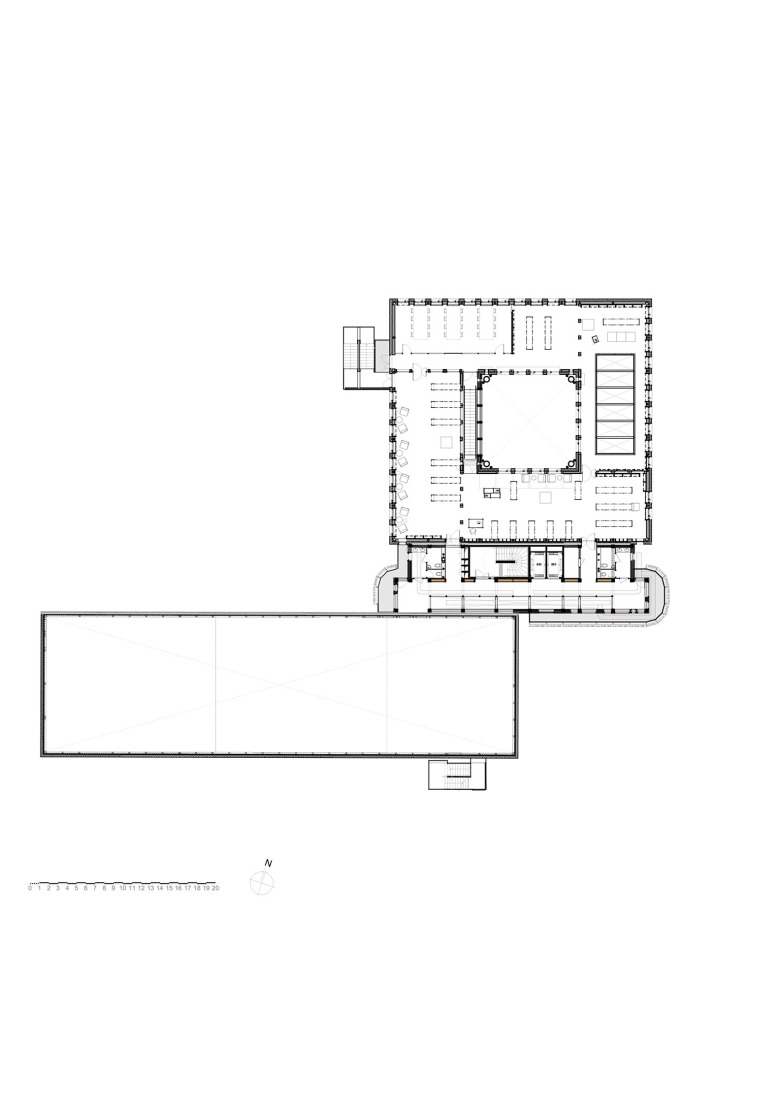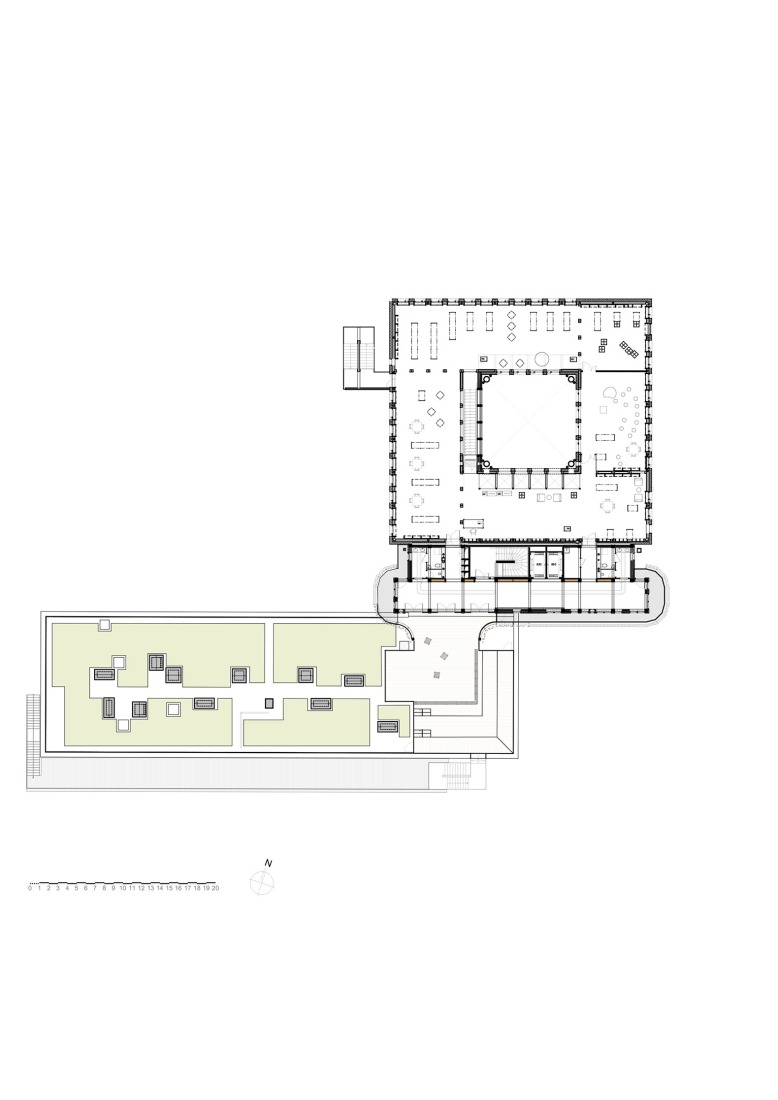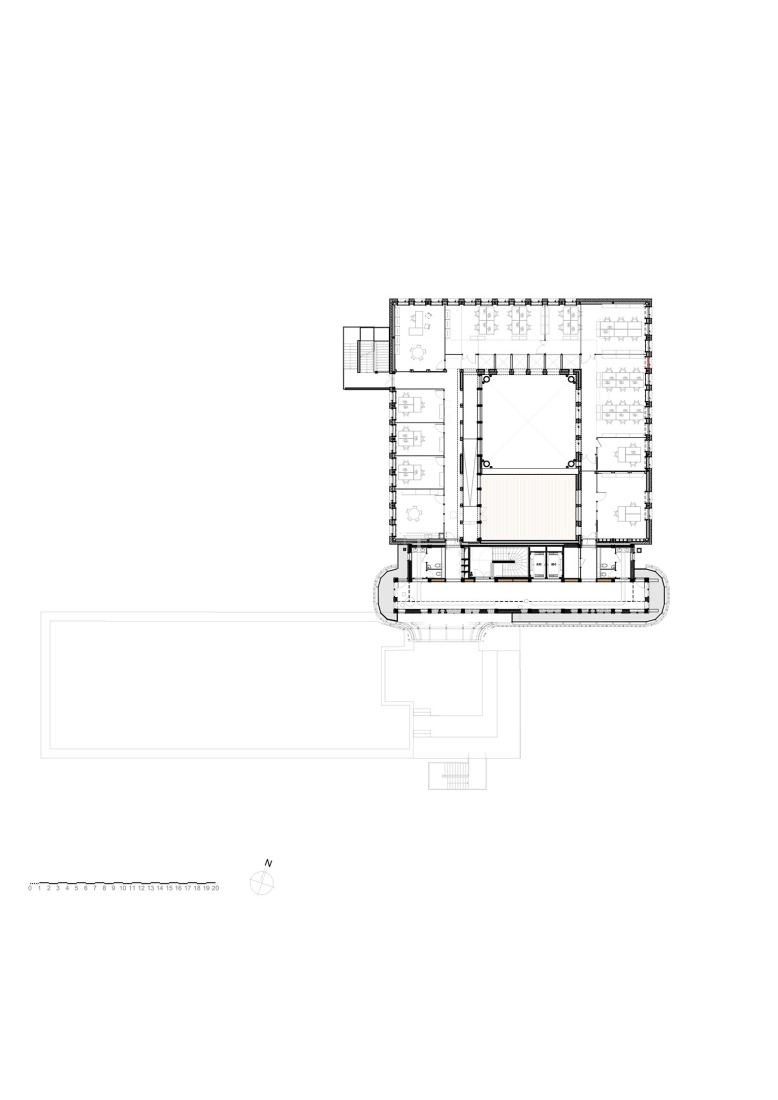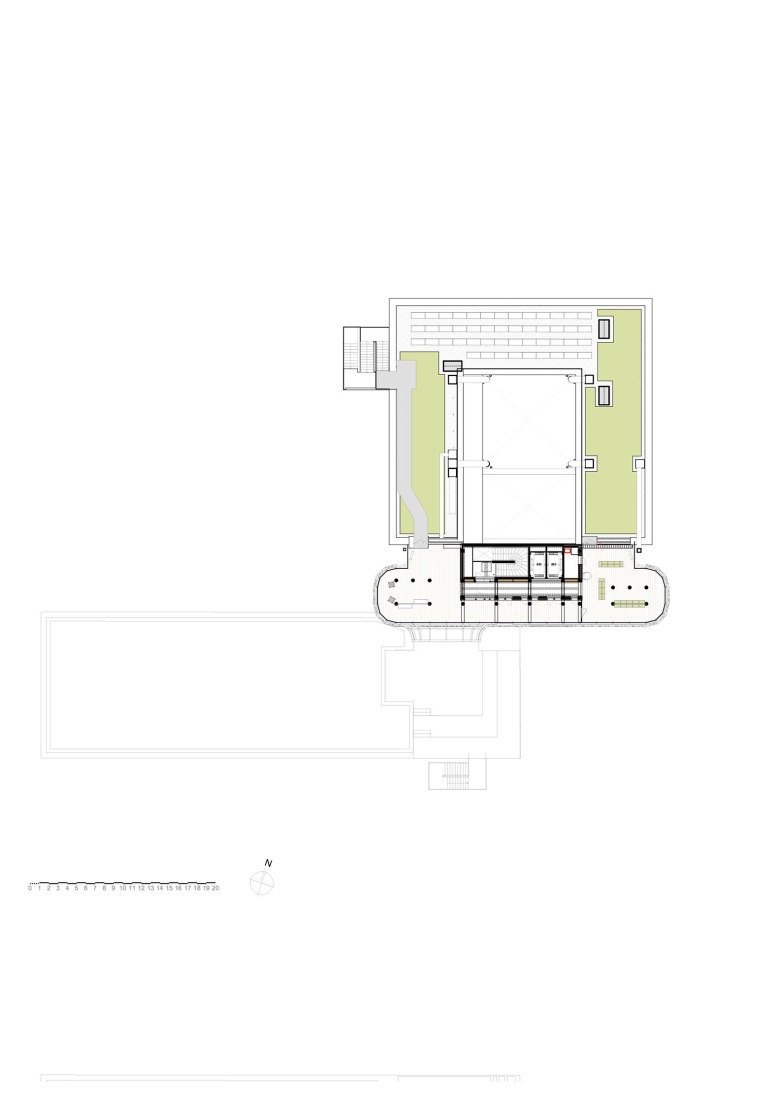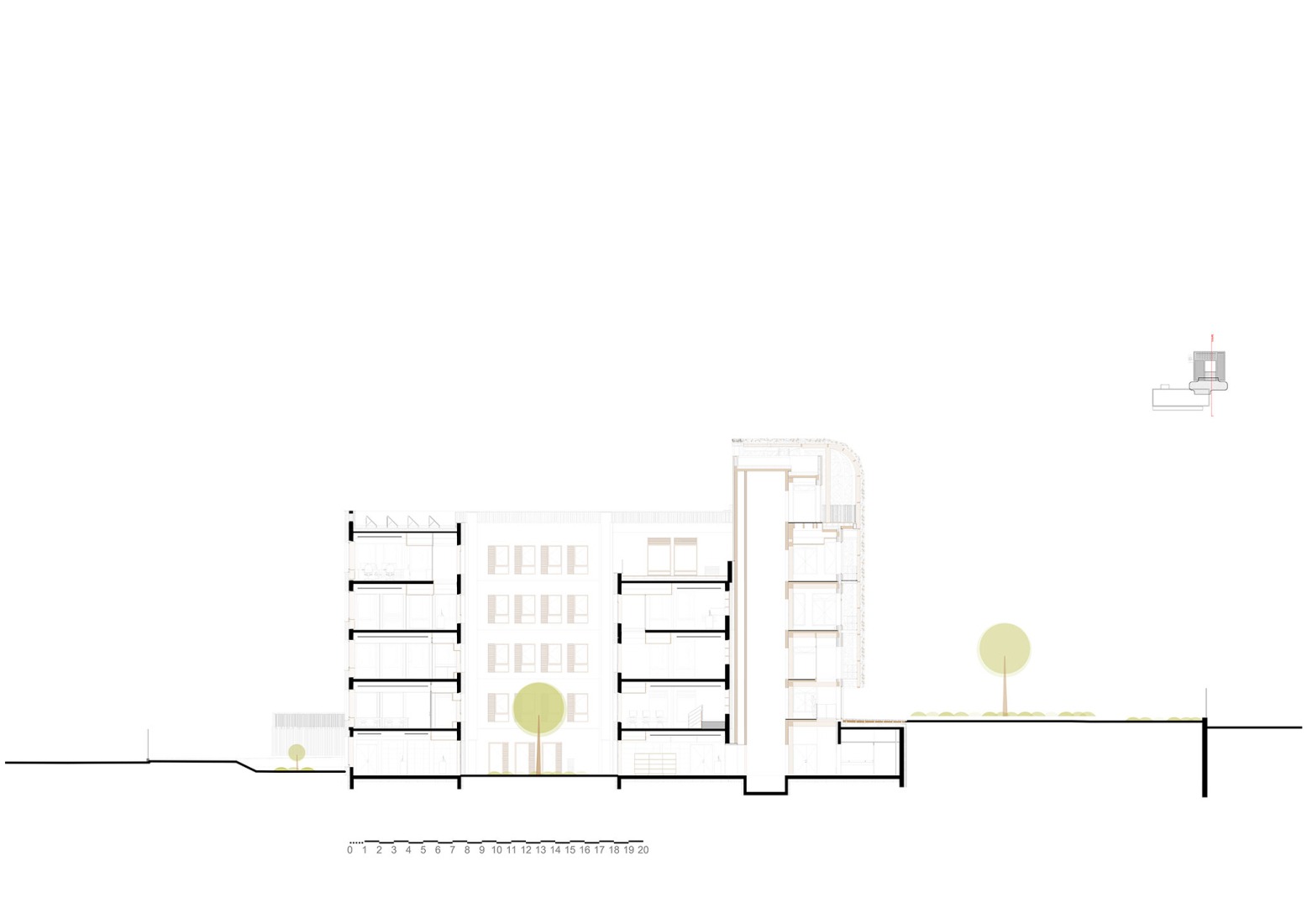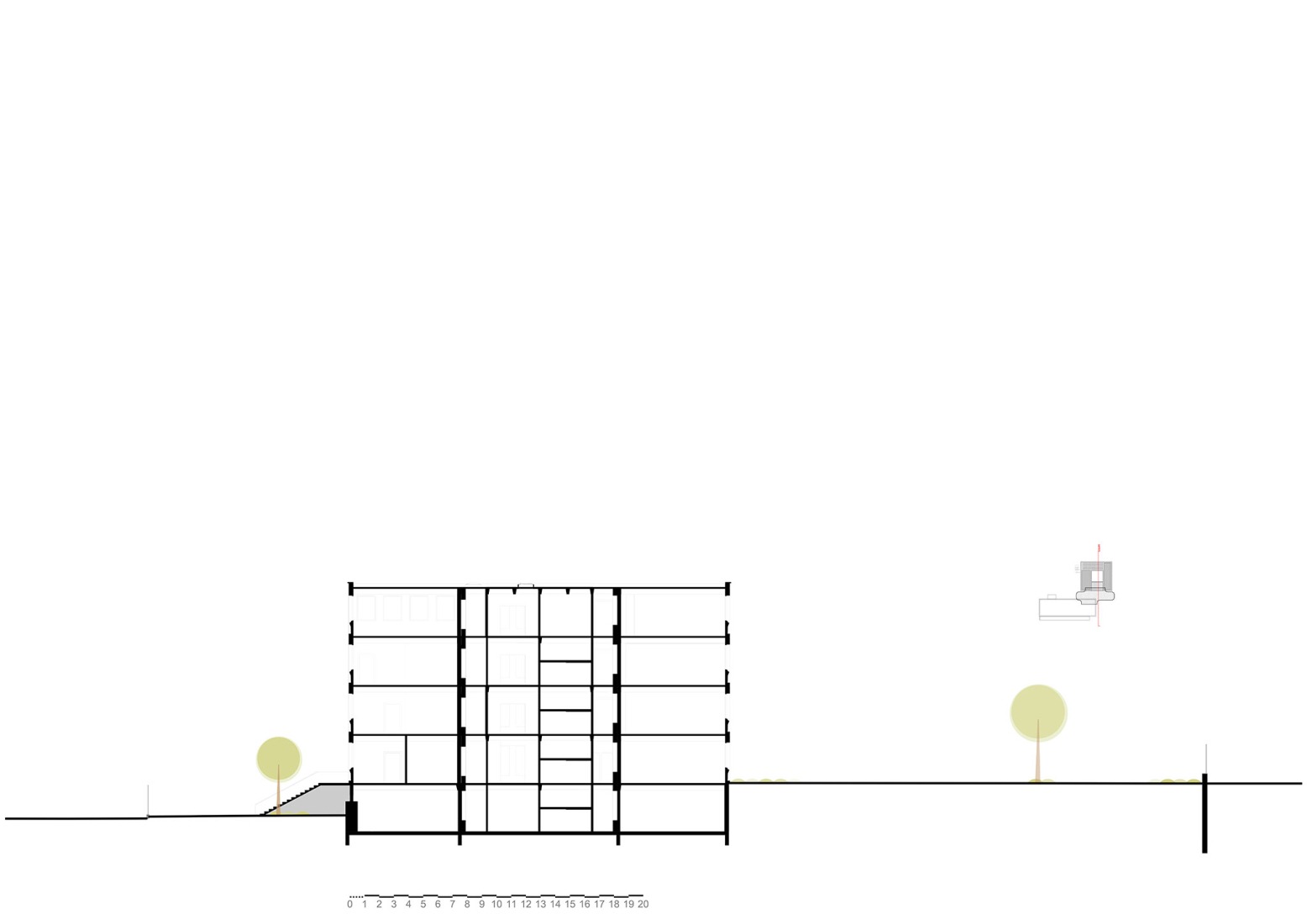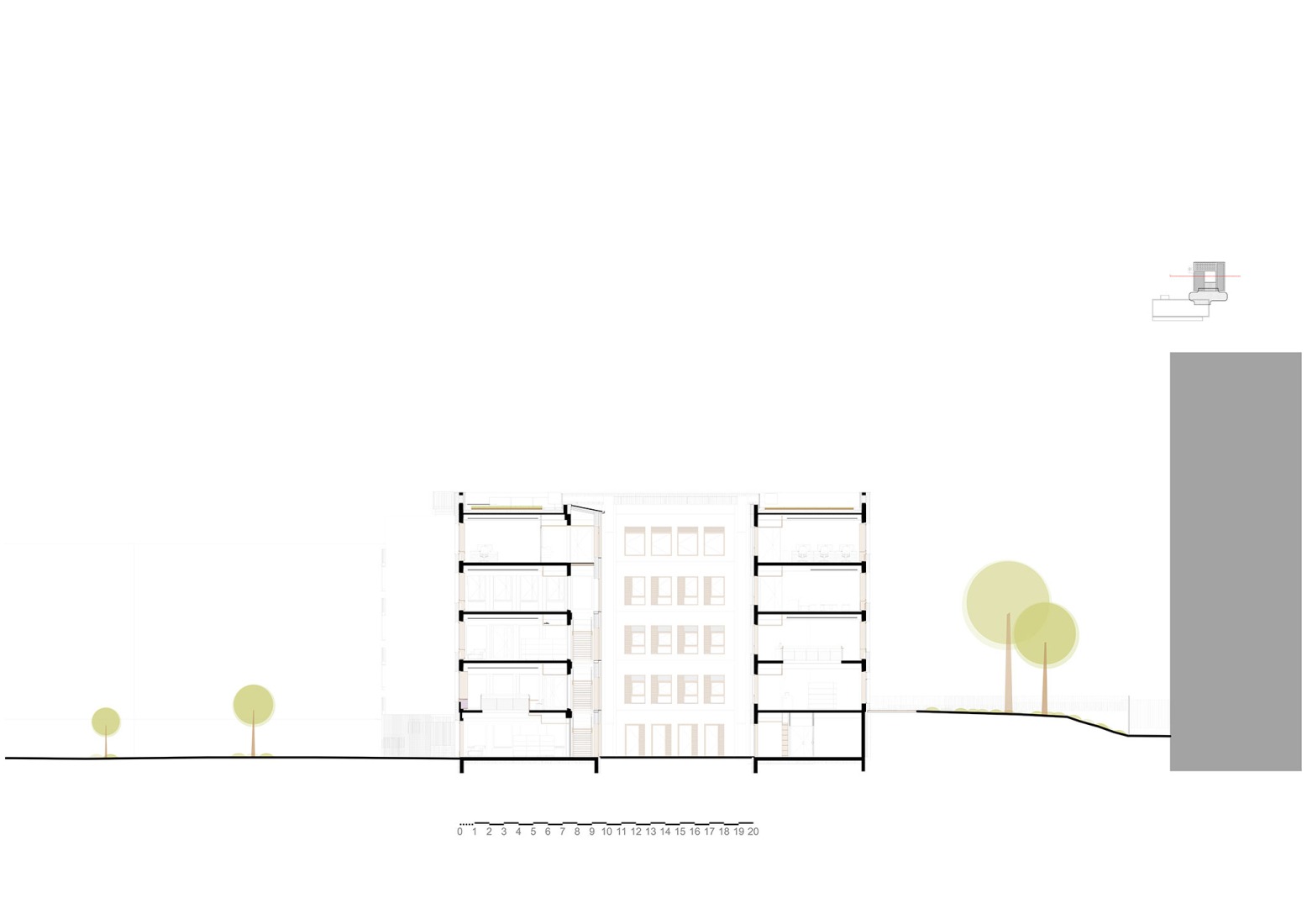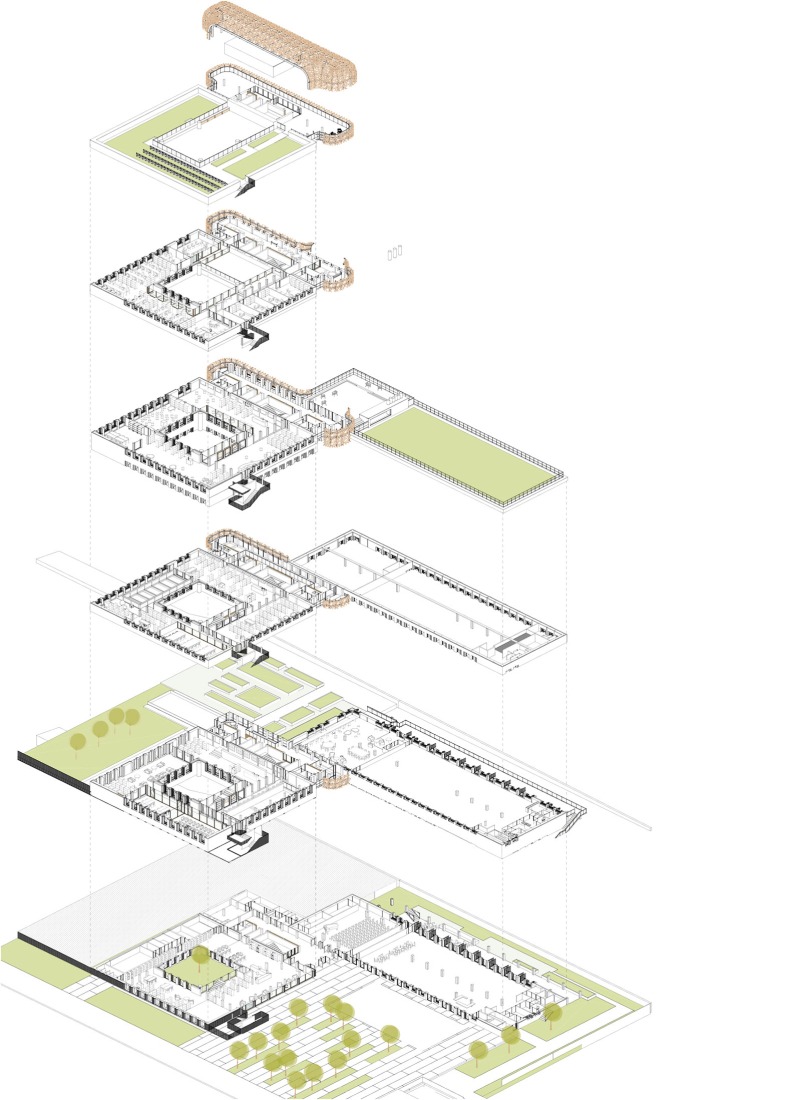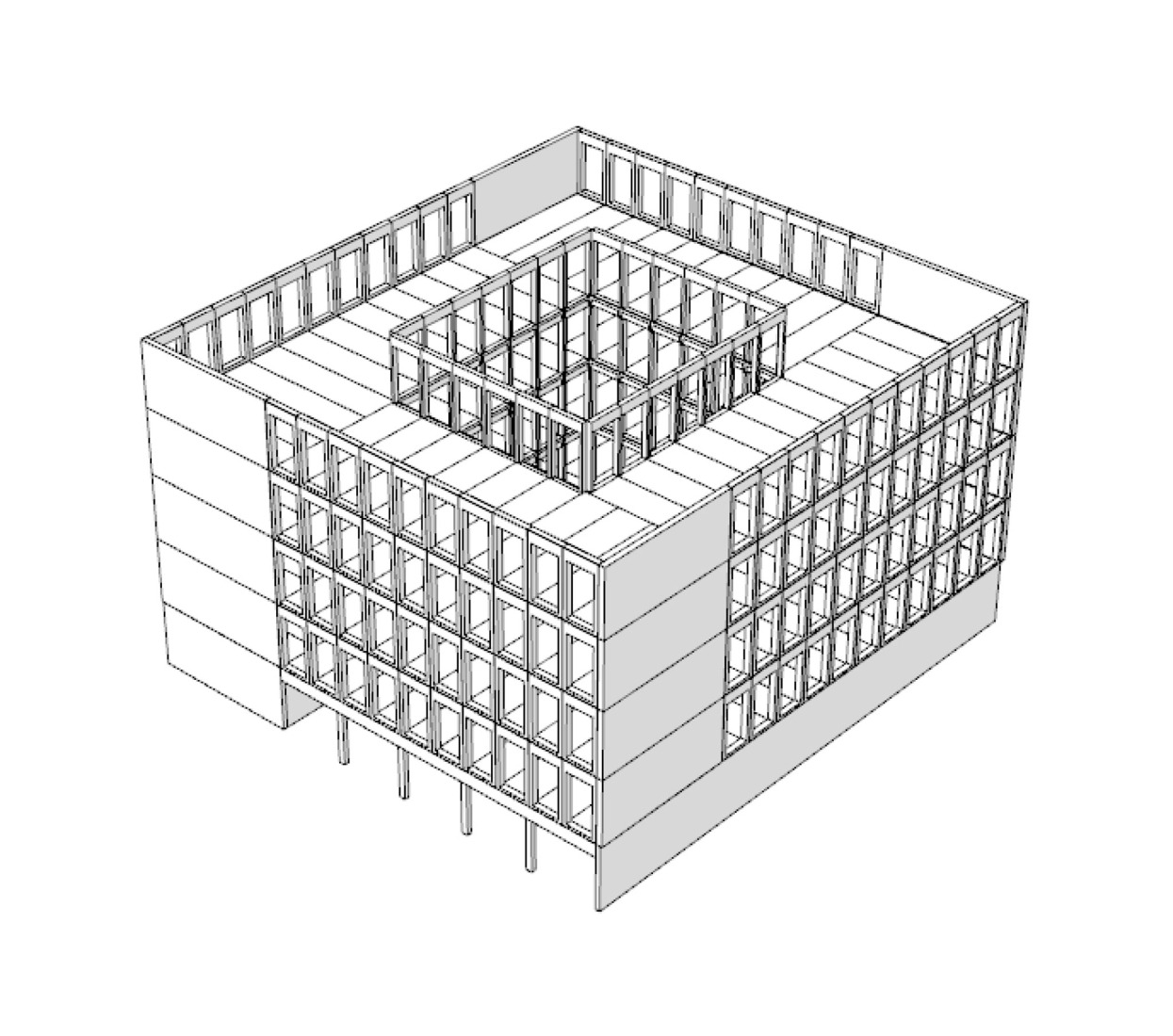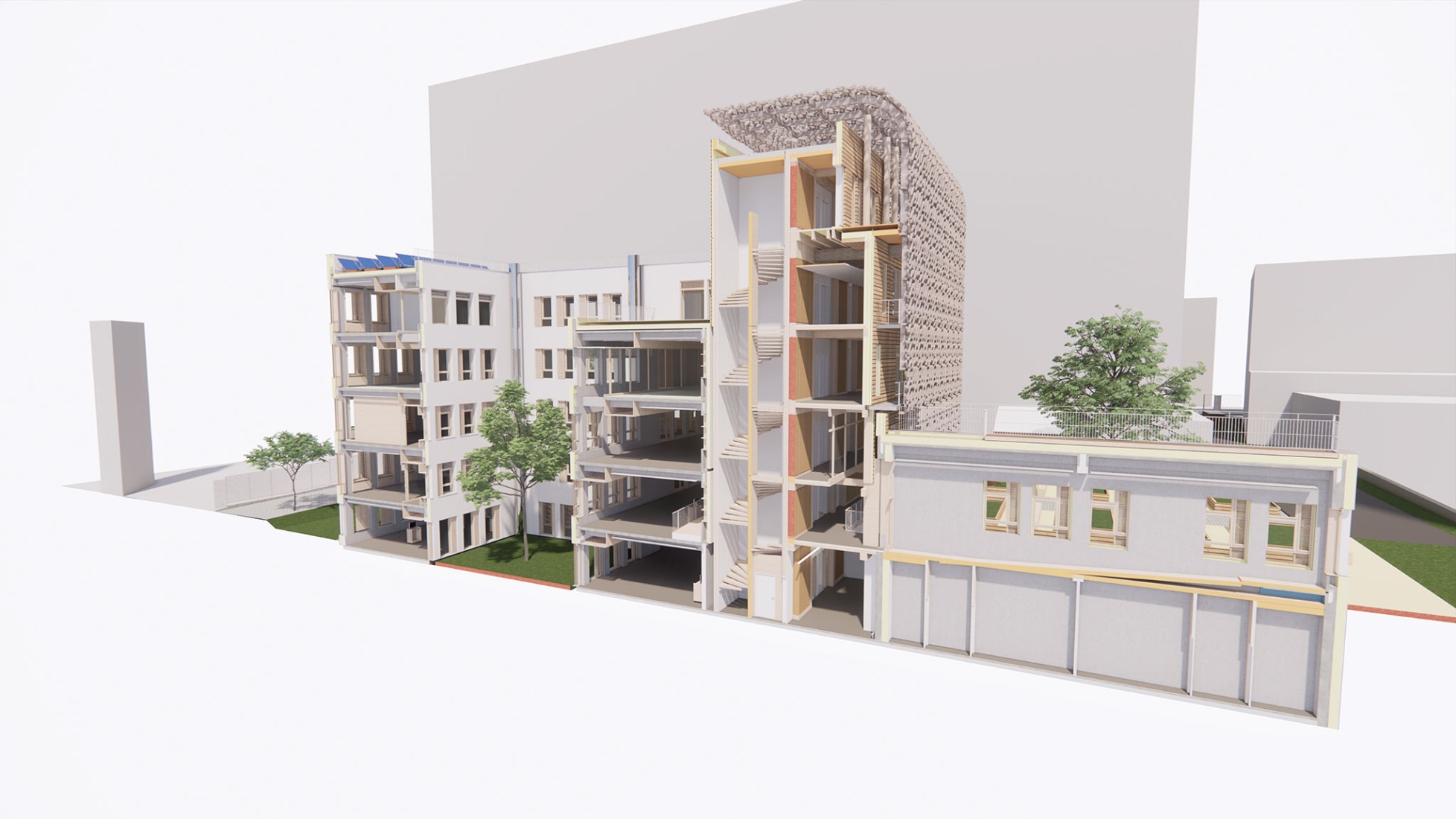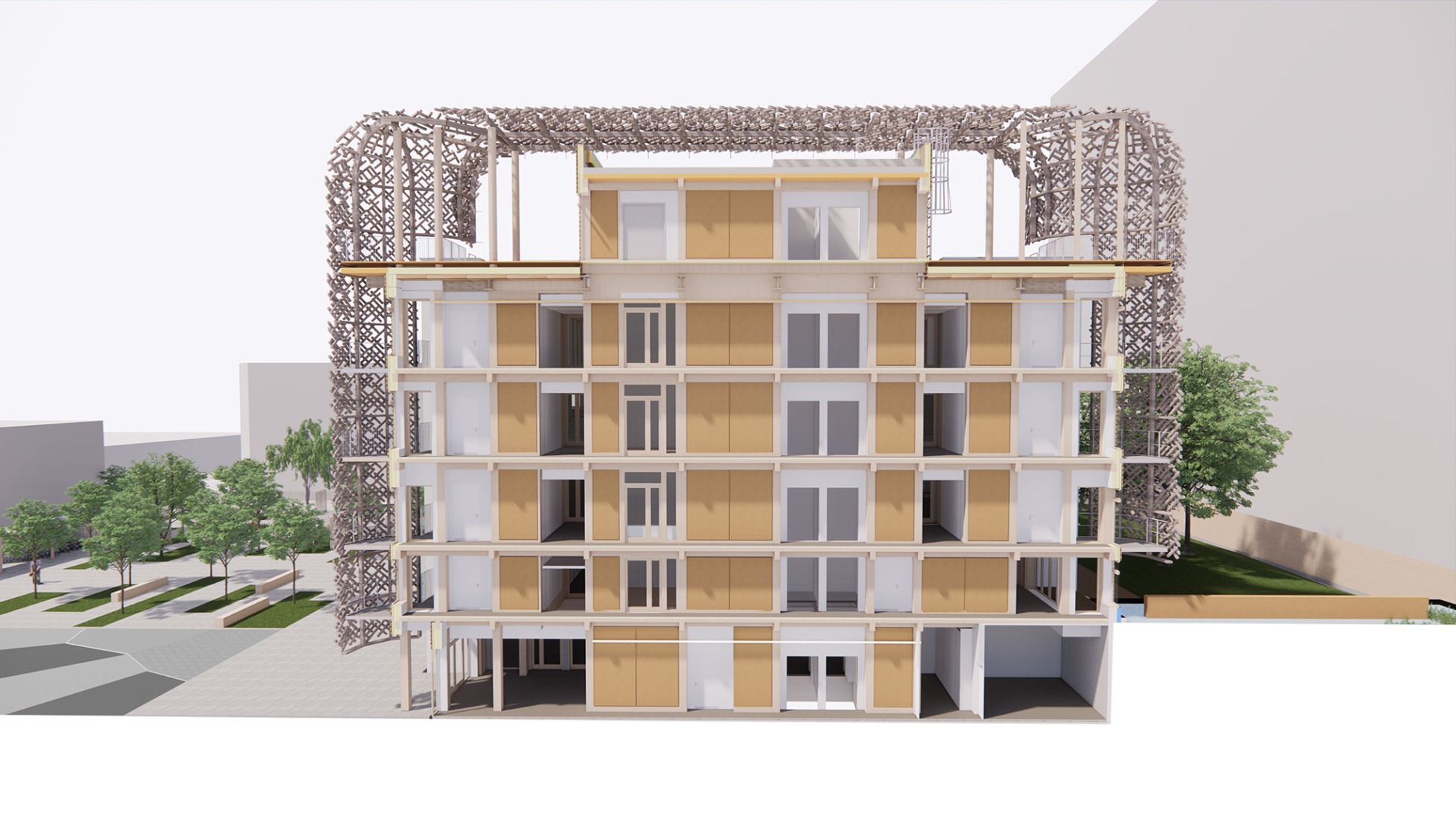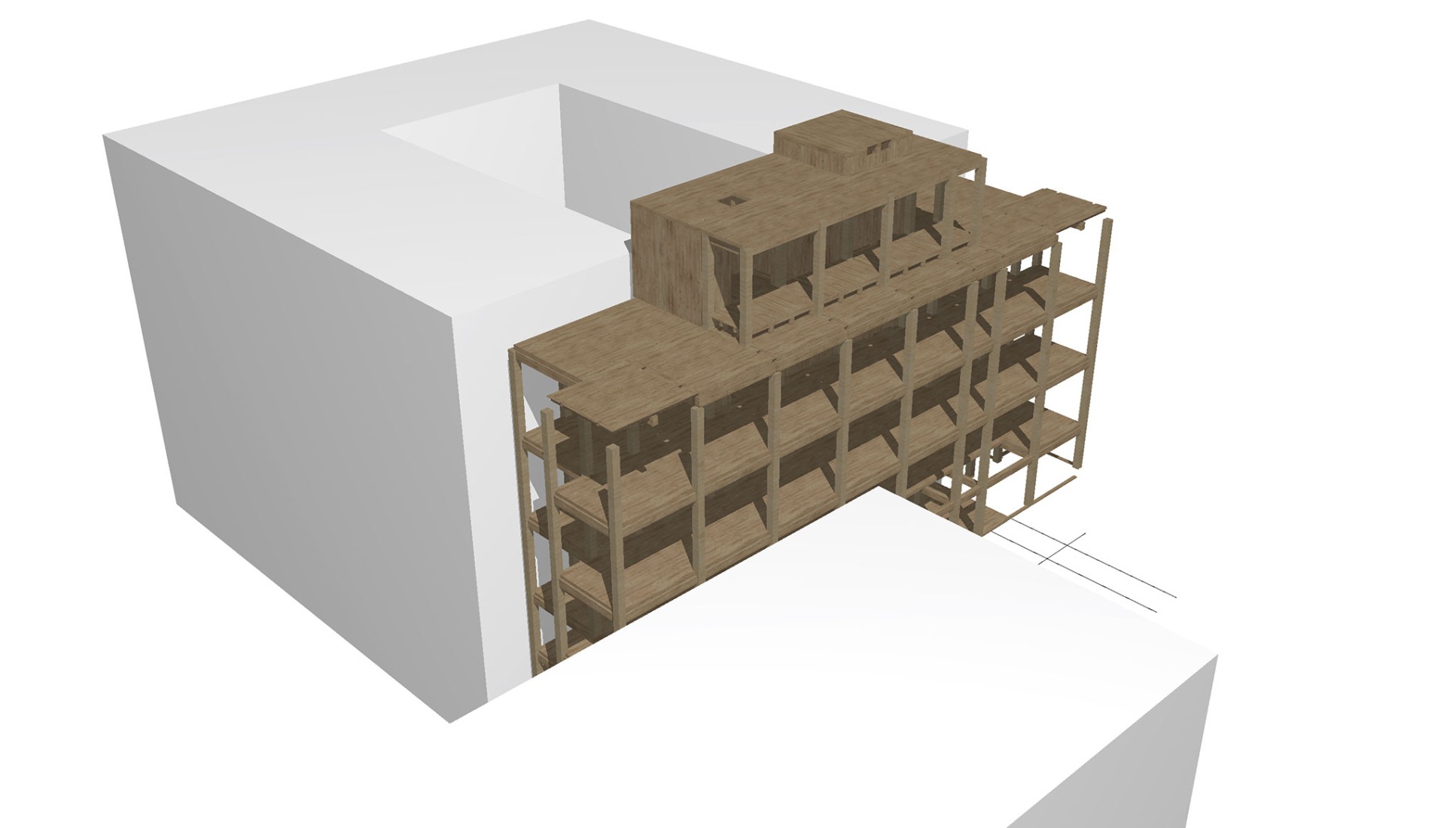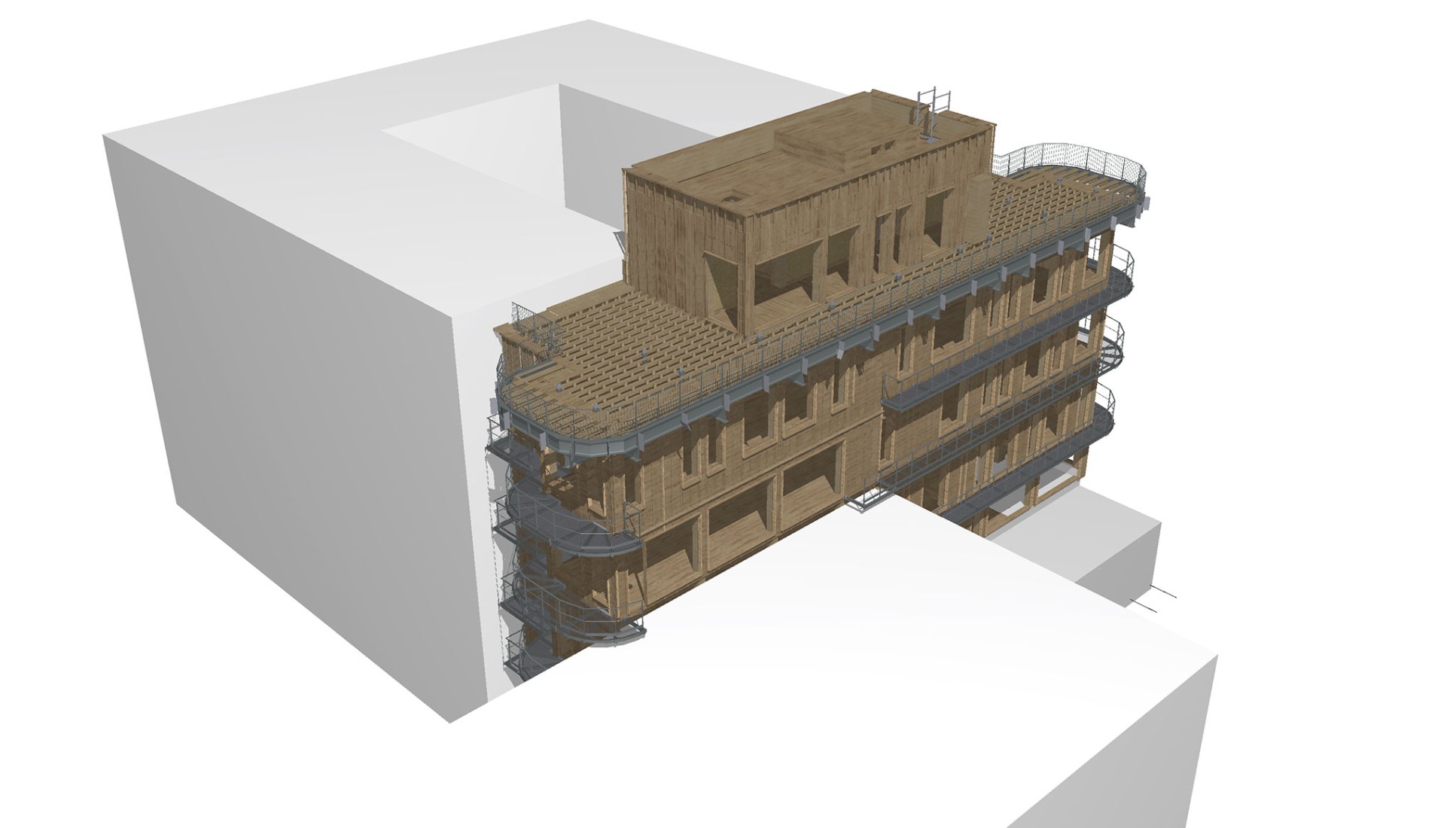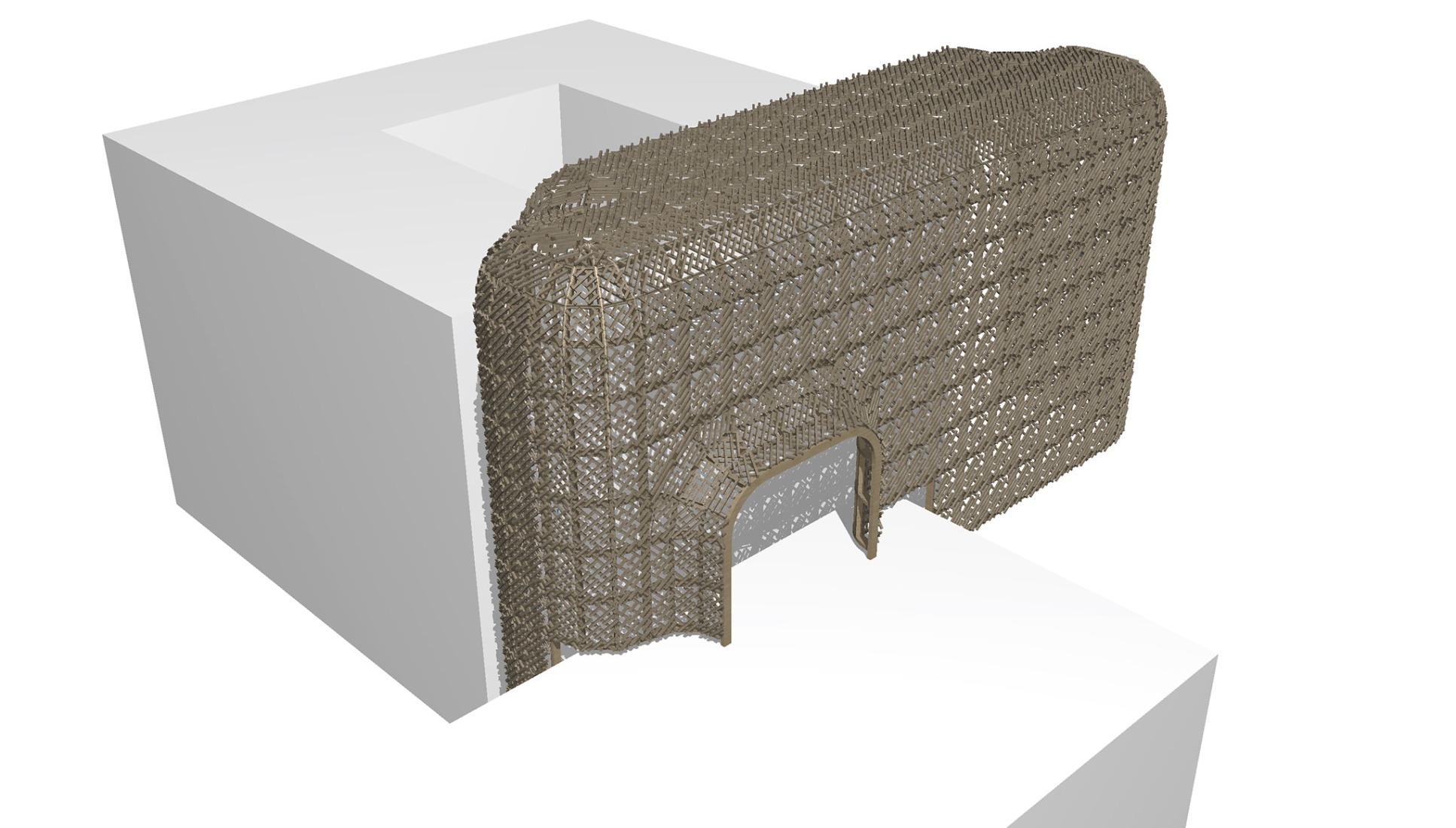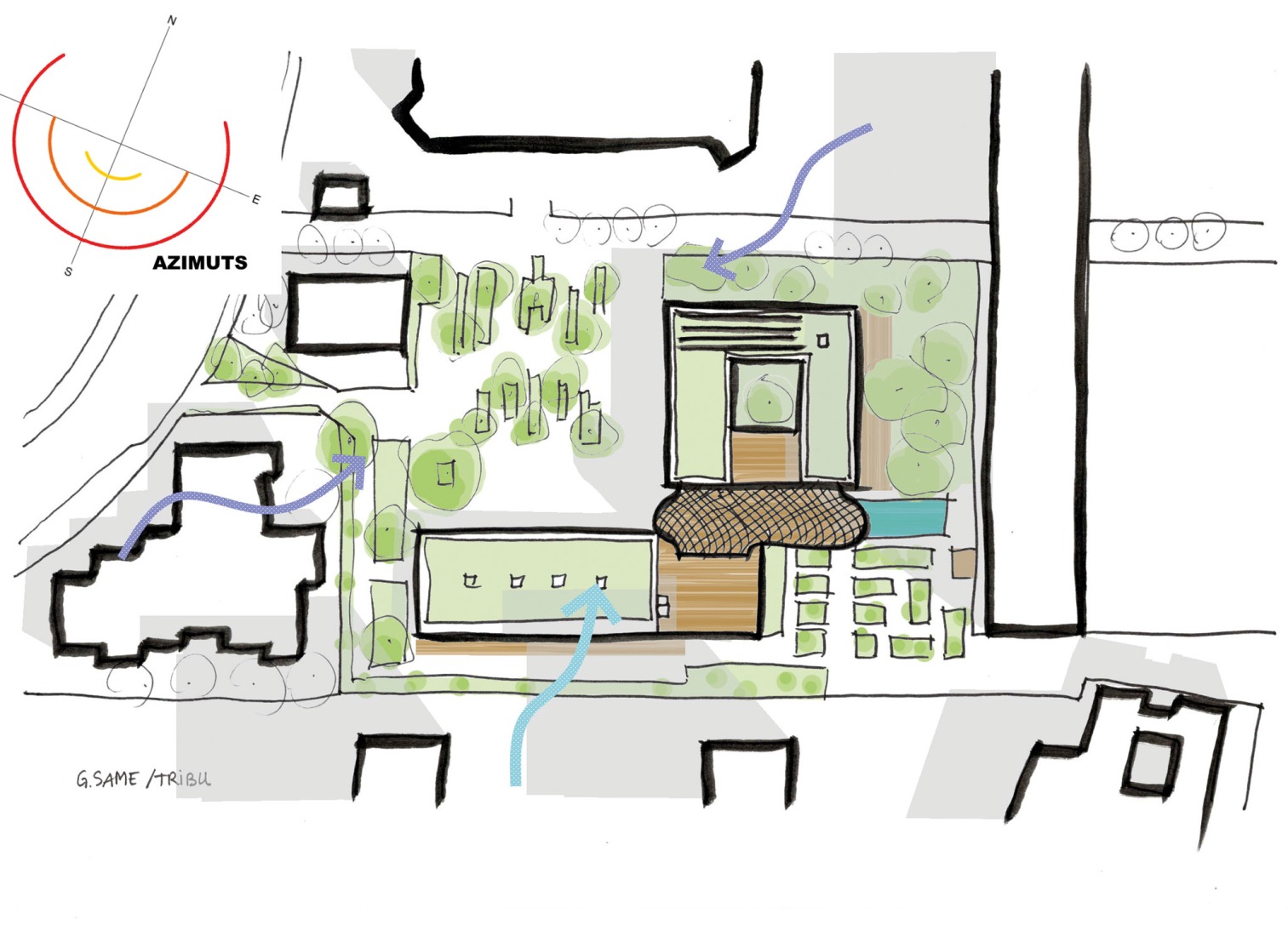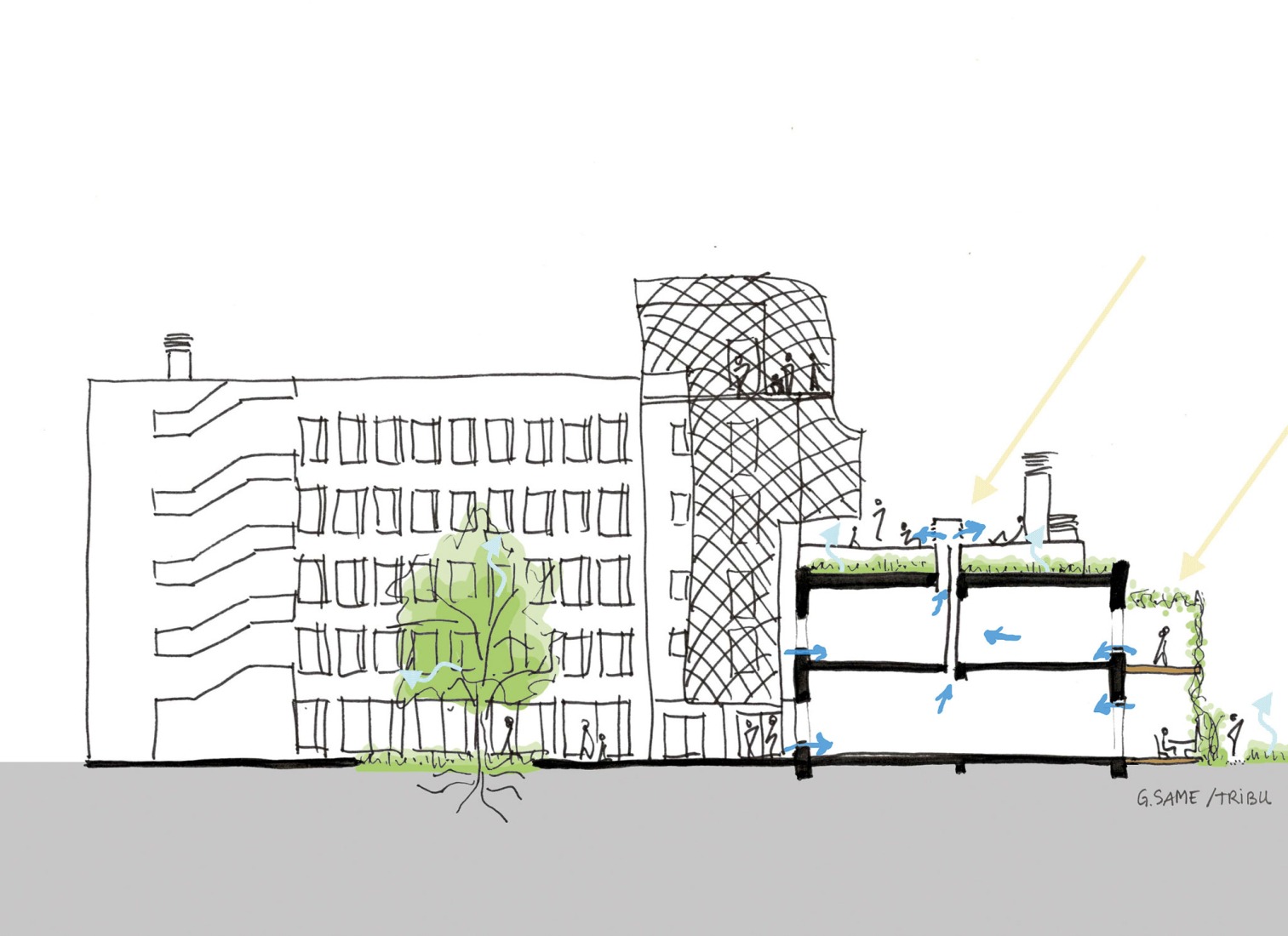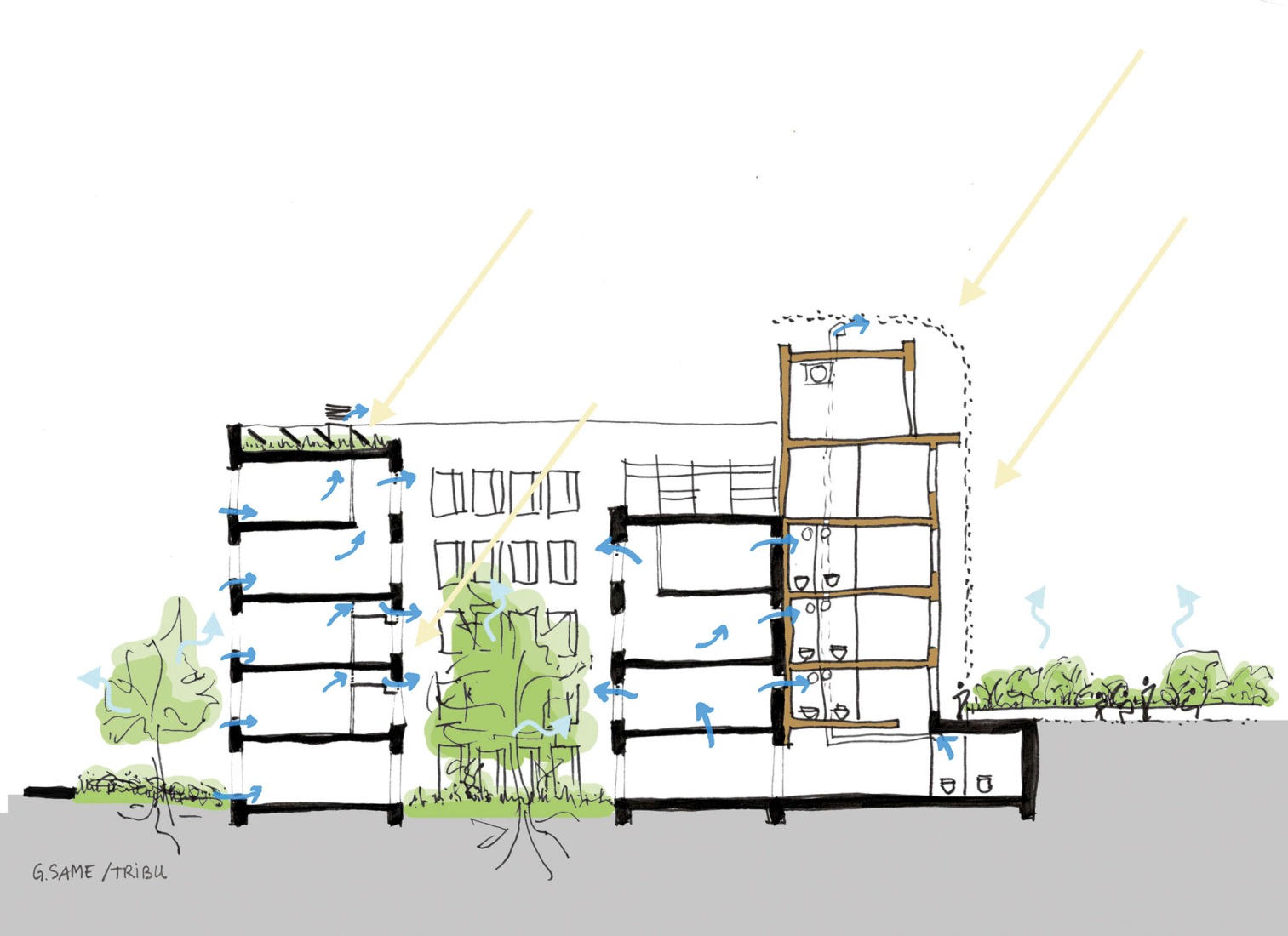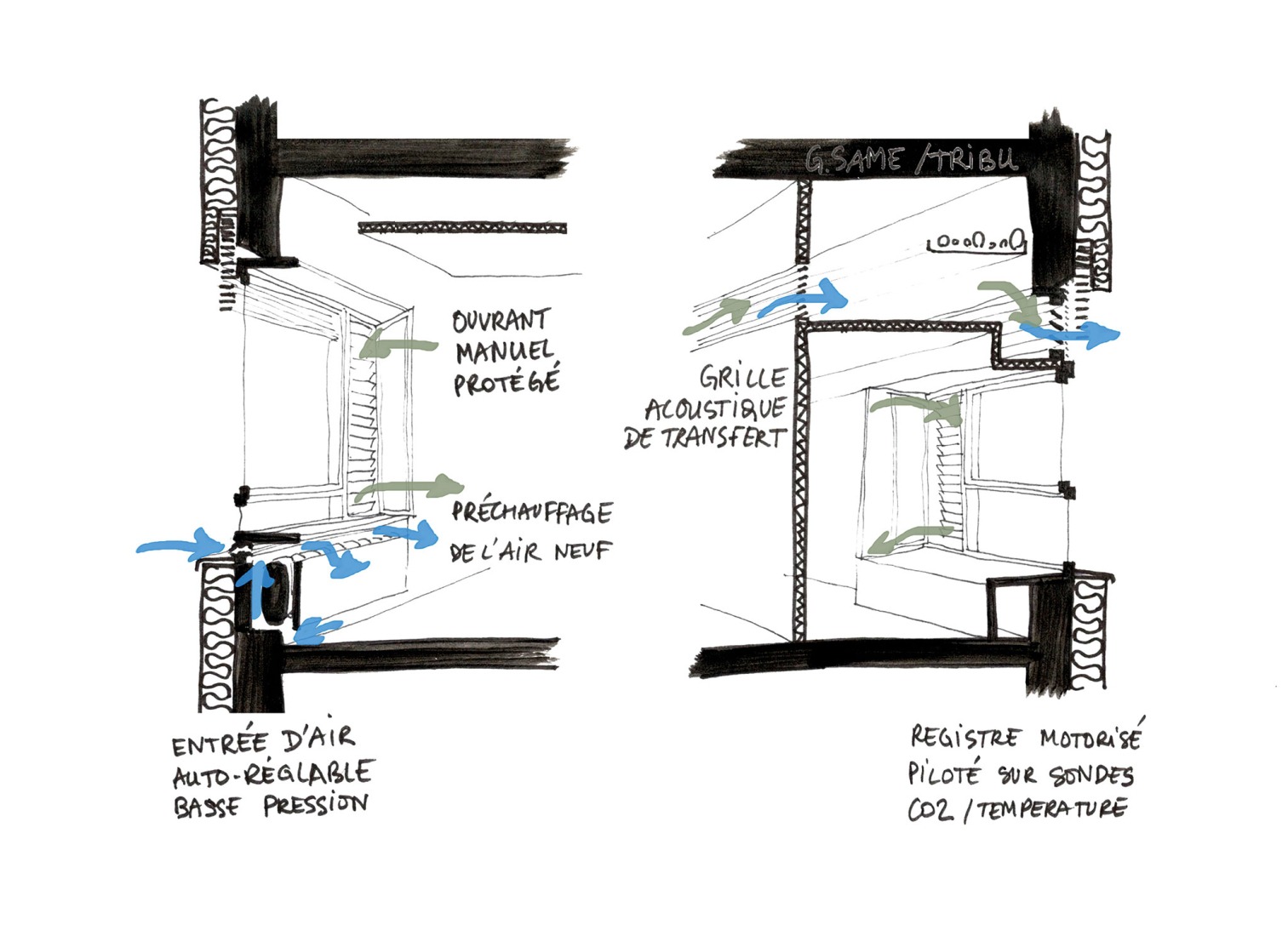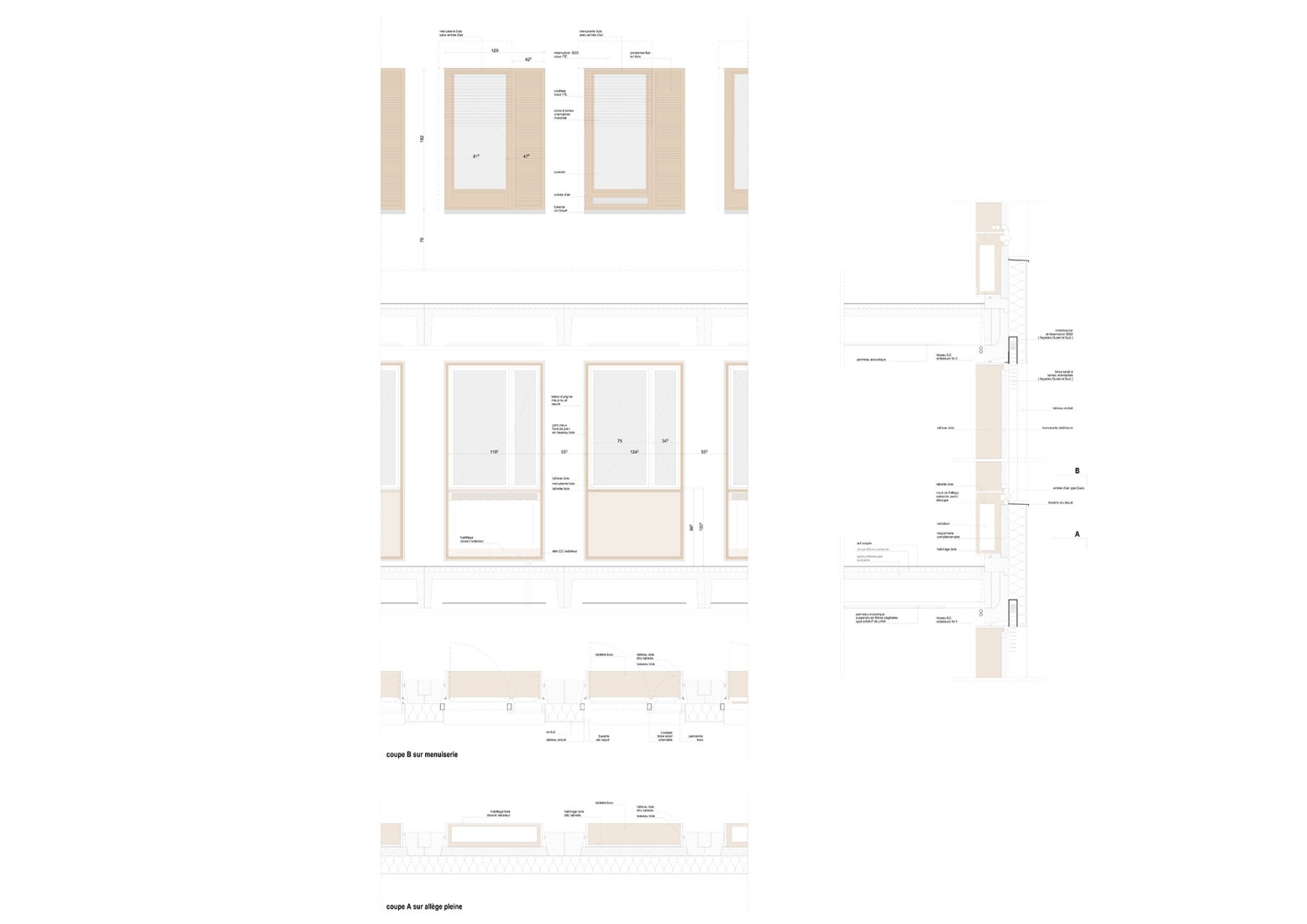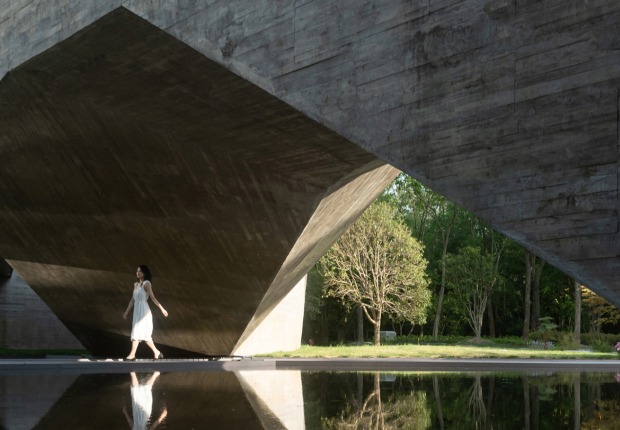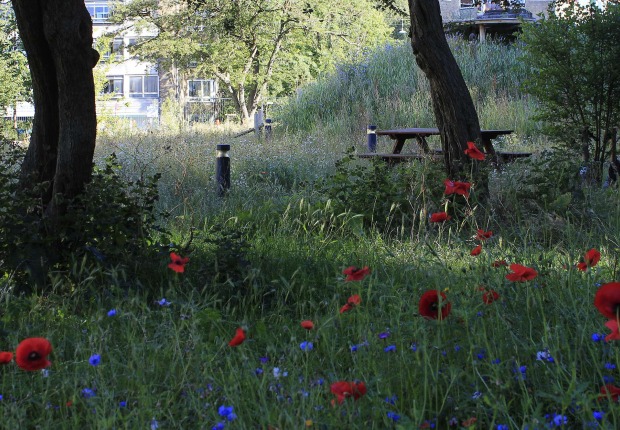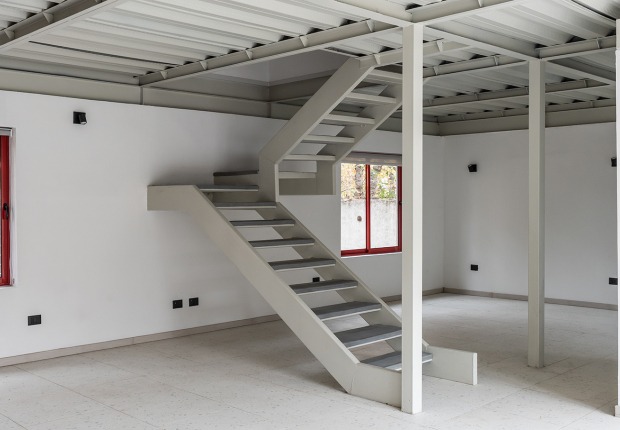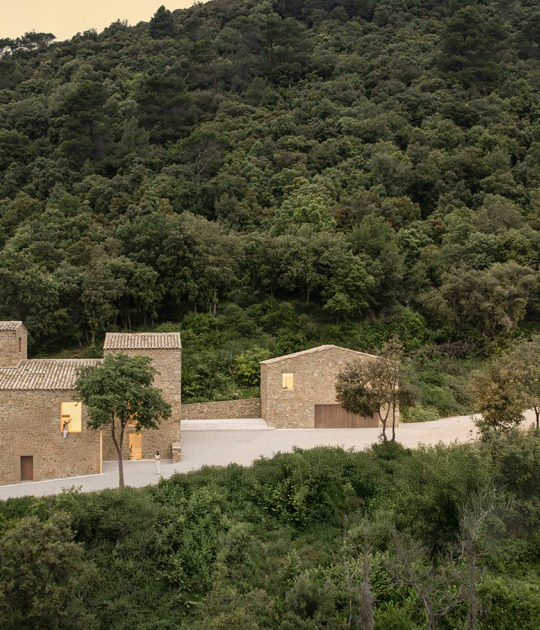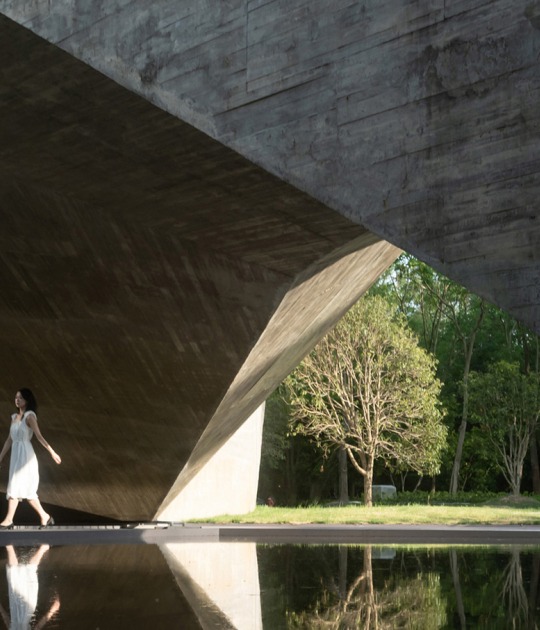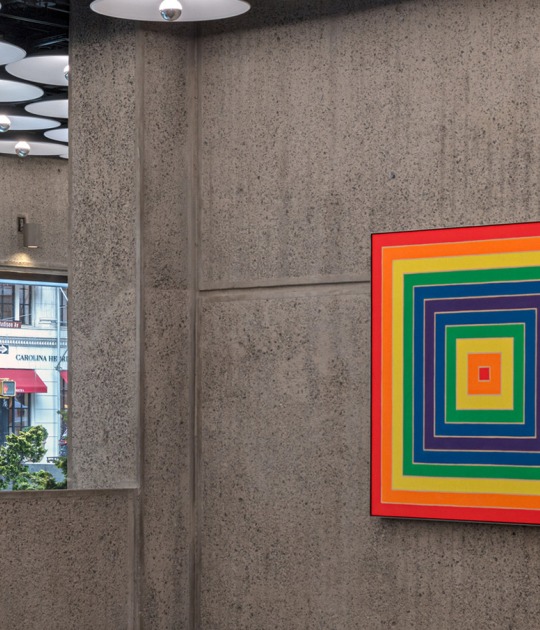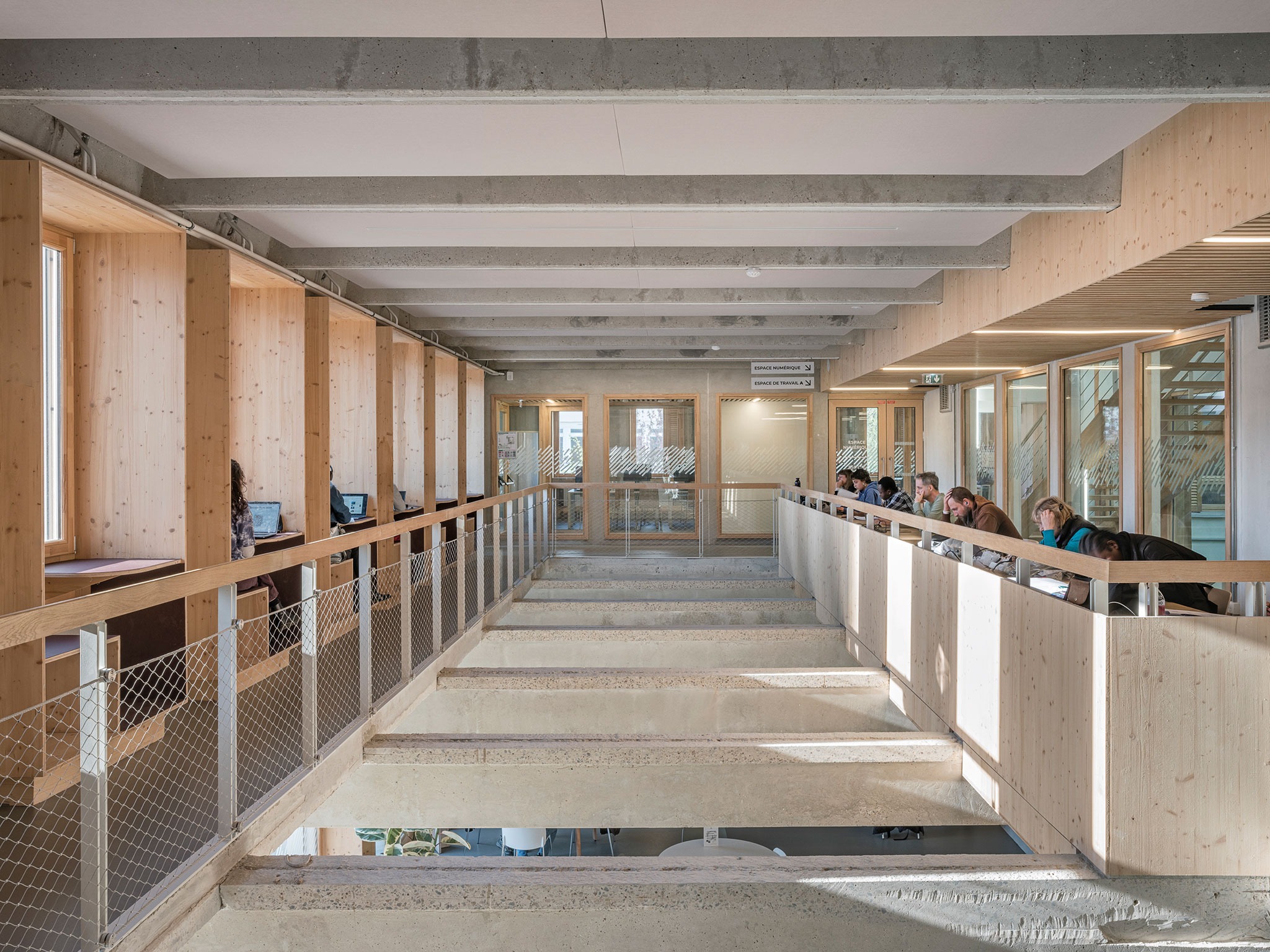
The media library and reception center designed by atelier associer preserves the structure of the former school and features a careful rehabilitation of prefabricated elements, such as posts, beams, floors, and reinforced concrete façade panels, along with selective deconstruction of concrete floors, walls, and façade panels.
Applying sustainability criteria, the project took advantage of the surrounding resources. The orientation allows for better use of sunlight, while the renovated existing structure provides inertia that improves interior temperature regulation. By incorporating double-height interior hoppers and an air shaft with the courtyard garden, the building ensures proper natural ventilation. Adopting an ecologically responsible approach, the existing situation is completely renovated with an integrative bioclimatic proposal.
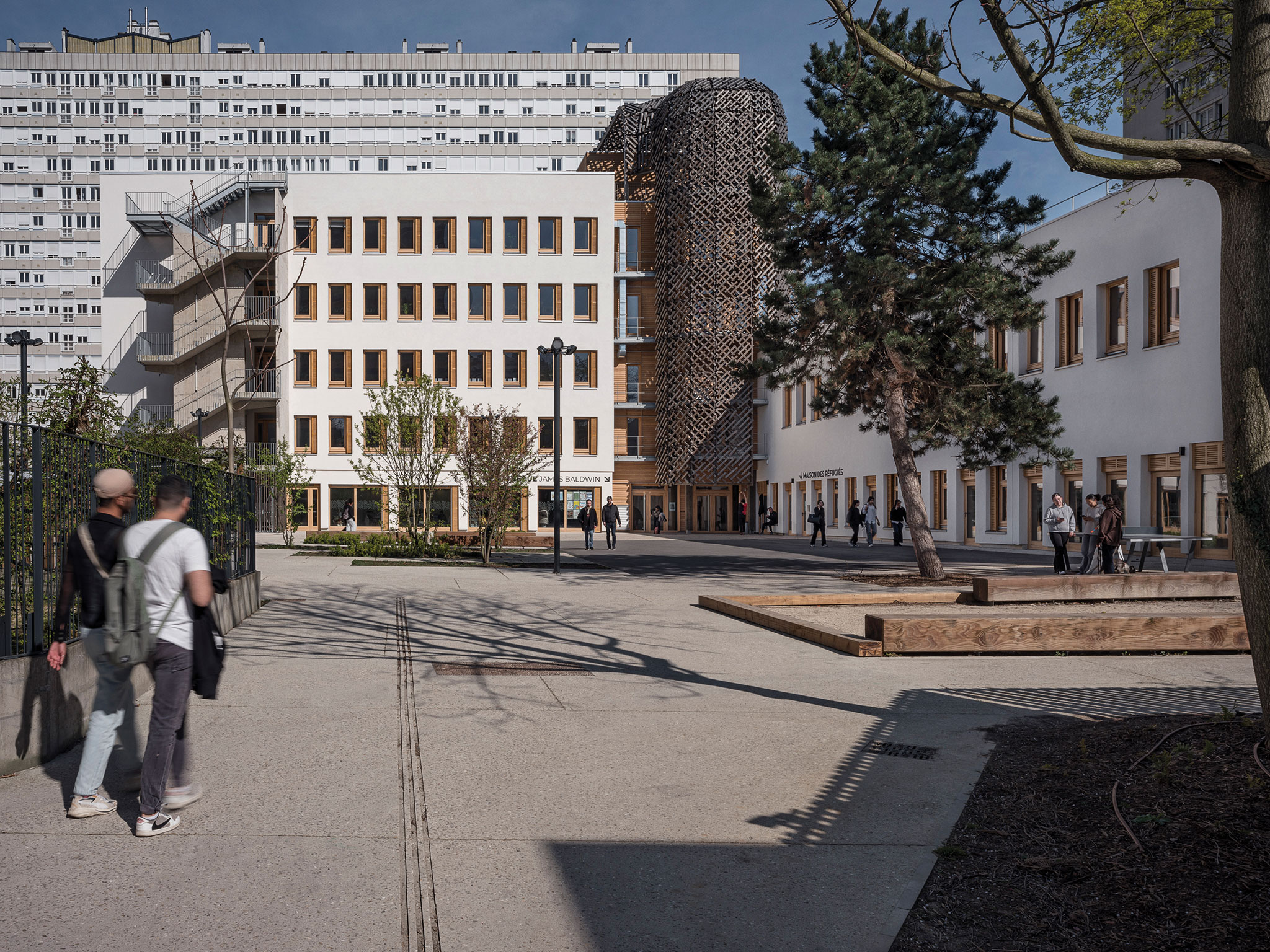
James Baldwin Media Library & Refugee House by associer. Photograph by Pierre-Yves Brunaud.
Project description by associer
In the heart of the 19th arrondissement of Paris, an isolated site surrounded by blocks of flats and towers has been refurbished. The atelier associer transformed the 1970s Jean Quarré upper secondary hospitality school into a media library and a Refugee House.
An innovative brief
The high cultural and social value of the chosen brief is unique in the world. It encompasses a neighbourhood cultural facility and a place dedicated to the integration of exiled people on the territory of Paris. The media library joins the four media libraries of the city of Paris that possess a “centre for the Deaf” to welcome the public communicating with sign language. The Refugee House brings together under one roof all the aspects of refugees’ path to integration, in a convivial place of encounter and sharing.

Rediscovery of the existing structure
The former secondary school structures have been preserved, cleaned, and had asbestos removed. Prefabricated elements like reinforced concrete posts, beams, floors, and façade panels were refurbished. A selective deconstruction of concrete floors, walls, and façade panels was conducted, with cut-off pieces kept on-site for reuse. This process restored the structure's regularity and improved the quality of the exposed reinforced concrete. As a result, ideal spaces for a media library and welcome center have been created.
Space open to the air and natural light
The project is a bioclimatic design, drawing on the resources useful for its proper functioning in its environment. The now refined existing structure enjoys enhanced penetration of natural light. The exposed structure offers soft surfaces and rich textures, and provides inertia favourable to the improved regulation of the interior temperature. The entire project also provides enhanced natural and hygienic ventilation, namely through the creation of interior, double-height hoppers and of an air well with the garden in the patio.
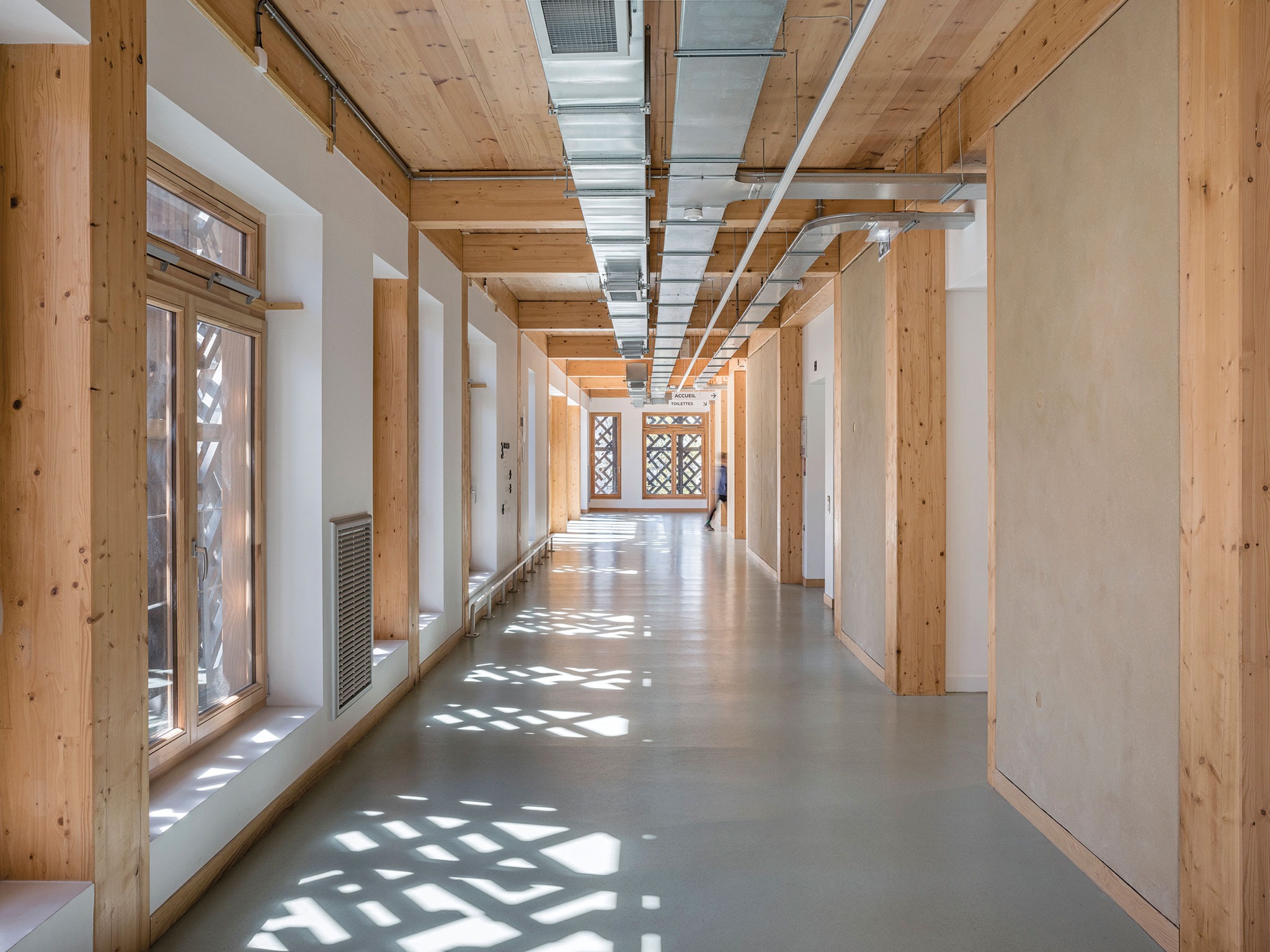
A link made of wood and pored earth
Taking an ecologically responsible approach, the architects have achieved a thorough renovation of the existing situation with a new construction made of biosourced and “geoscourced” material. The buildings, the square media library and elongated refugee house, are joined by a vertical volume, called “the link”, which serves the different levels and spaces of these two establishments. The walls of this unheated wooden construction are made of prefabricated poured earth, guaranteeing thermal inertia and regulated humidity. A wooden mantilla envelops the link whilst also serving as a high-protection sun filter.
Hospitality
The tall post and beam structure provides a welcoming space for refugees and residents to enjoy beverages, learn French, and cook. It features spacious areas and diverse places with specially designed acoustics for everyone's comfort. A long terrace facing south offers relaxation moments and access to a shared garden.
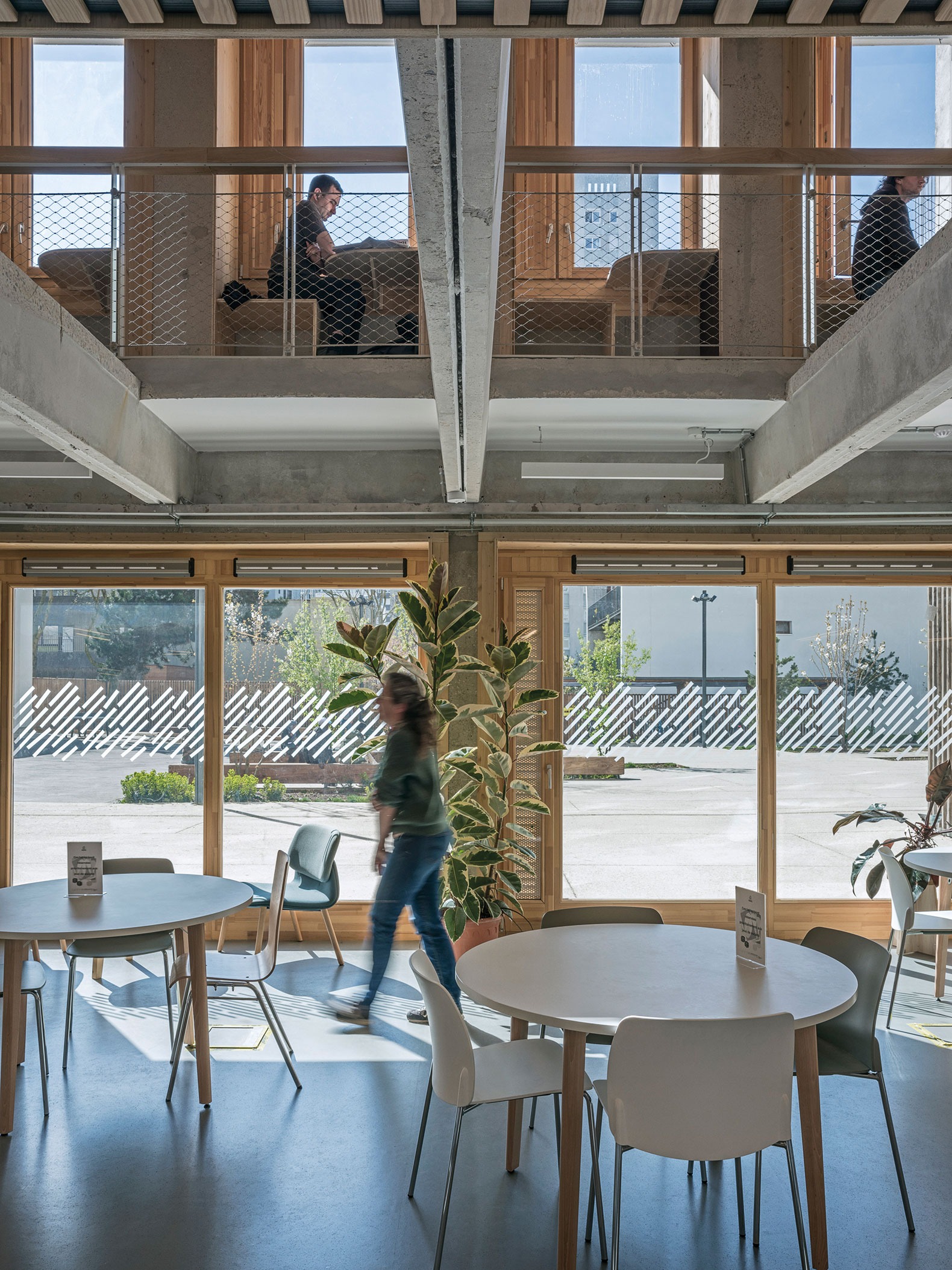
Landscape and biodiversity
The project reversed the waterproofing on 70% of the surface of the lot. Open ground reappears everywhere, in the patio at the centre of the media library, on the forecourt, the shaded garden, the shared garden and on the terrace of the Refugee House. The effort to counter the urban heat island effect is organized through increased green surfaces, the implementation of light-coloured ground cover (recycled concrete slabs and stabilised sand), and a shallow pool between the shared garden and the shade garden.
